
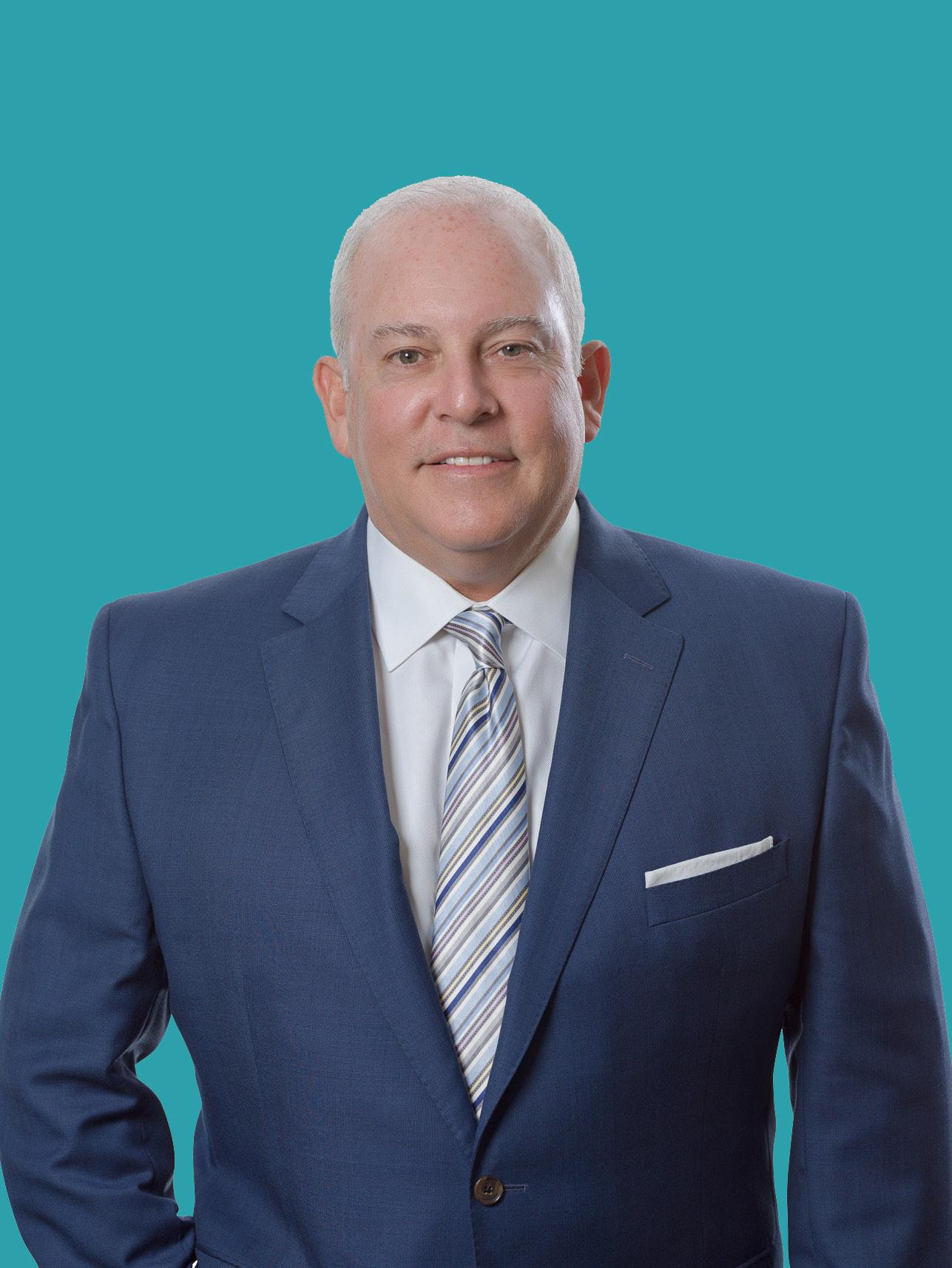
AN INTERVIEW WITH BENEFITMALL’S NEW PRESIDENT
INSURANCE
Recognized/Professional Development/COMPLIANCE
SERVING CALIFORNIA’S ANNUITY, LIFE AND HEALTH
PROFESSIONALS • MARCH 2024 Awardees

















Failure to Survive Product Line With liberal underwriting standards and unique flexibility, the Failure To Survive coverage provides a death benefit, and can accommodate impairedrisk cases that would typically be declined or postponed by traditional market carriers. • Contract Indemnity FTS • Key Person FTS • Buy/Sell FTS • Business Loan FTS FAILURE TO SURVIVE LOAN INDEMNITY CONTRACT INDEMNITY BUY/SELL INDEMNITY KEY PERSON INDEMNITY ® CA License #: 0591207 Petersen International Underwriters (800) 345-8816 F www.piu.org F piu@piu.org When Traditional Carriers Can’t...or Won’t ® ®




























































flexible health plan options FOR SMALL BUSINESSES Insurance companies vary by region. With Covered California for Small Business, we help tailor health plan options so employers and employees can get the coverage they want at a price that fits their budget. Our flexible coverage options work with businesses as they grow to offer coverage that will adapt to their needs as well as care for and retain quality employees. CoveredCA.com/ForSmallBusiness | 844.332.8384 ® Follow us on LinkedIn /covered-california-for-small-business CCSB_70485_24_calbroker-ad_jan.indd 2 11/17/23 3:18 PM



•
•
•
BenefitMall, we understand the need for speed, accuracy, and efficiency. That’s why we’re thrilled to introduce our new Search and Add Plans experience in Client Ready Quote System ® (CRQS). In addition to overall system enhancements that prioritize faster results, reliability, and ease of use, the new Search and Add Plans experience includes:
At
A sleek and modern user interface
An advanced and intuitive navigation menu
An interactive shopping cart and e-commerce experience See how much easier and quicker quoting just got! CRQS Search & Add Plans: An exponentially quicker way to quote More2 Scan to watch video. ©2023 BenefitMall. All Rights Reserved. Learn More
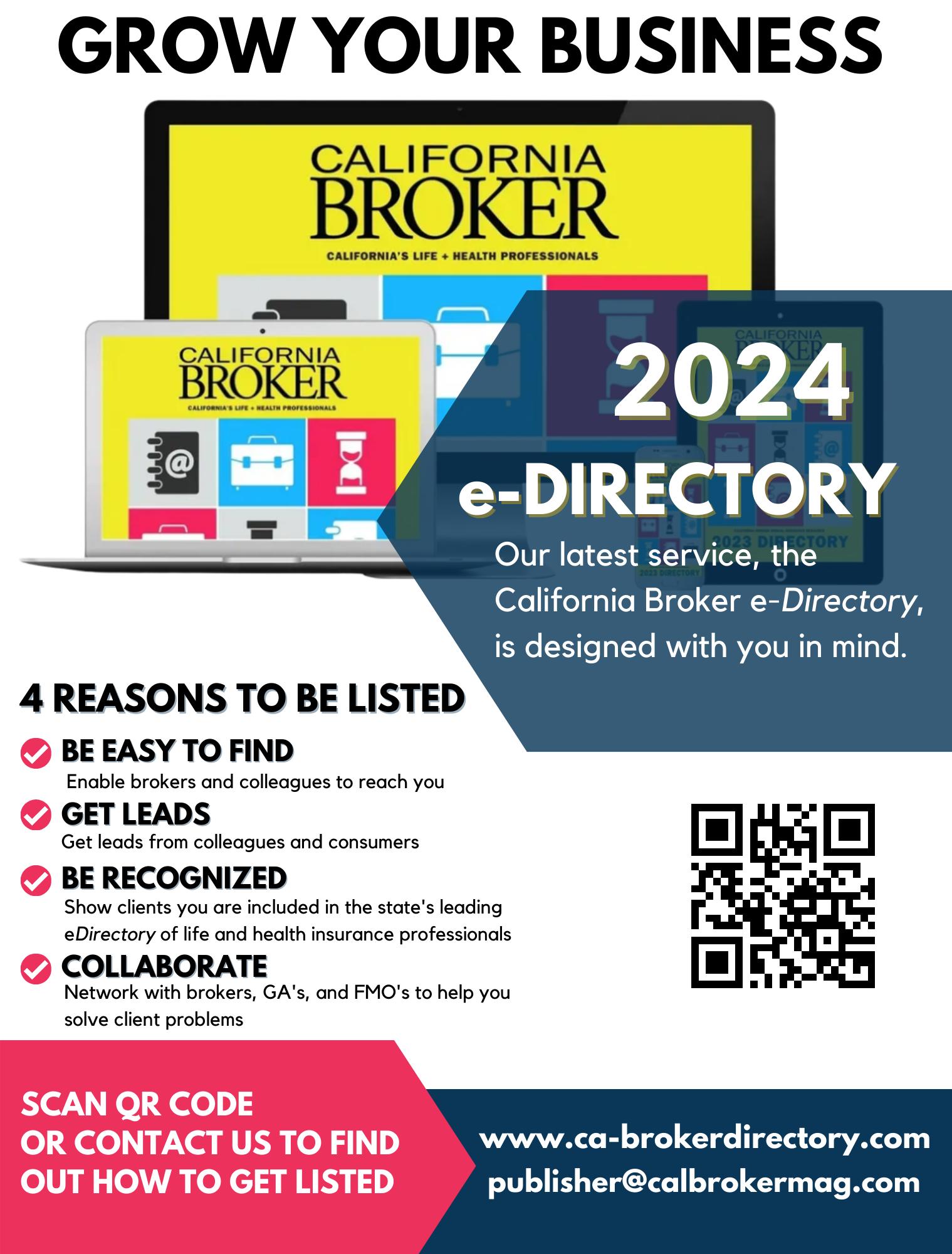
MARCH
TABLE of CONTENTS
SERVING CALIFORNIA’S ANNUITY, LIFE, AND HEALTH INSURANCE PROFESSIONALS
14
Cal Broker:
Shine The Light Awardees 2023: The First Eight Awardees are Featured for the Outstanding Work and Contributions Made in Our Industry
By Emma Peters
18
LOOKING FORWARD
Challenges of Accessing Medical Doctors in the Future
Learn the Key Trends That Impact How Your Clients Will Access Doctors in the Future
20
COMPLIANCE
If These Walls Could Talk Compliance is an Employer’s Responsibility, Now Employee Benefits Professionals Have Resources That Can Help Their Employer Clients Stay Compliant
By Kathy White
22
COMPLIANCE
Quarterly Compliance Update
Get Ready for the New IRS Filing Threshold and Help Your Clients in Need
By Misty Baker
24
Cal Broker’s commitment is to be the leading source of news and information for California brokers and agents operating in the health, life, and annuity industry. We are committed to connecting Life and Health insurance professionals to valuable resources and solutions they can provide to their insurance clients.
BENEFITMALL
Bob Love is the New CEO of BenefitMall
Bob Love’s Career Path Sounds Like a Who’s Who Hall of Famer. With Success and Consistent Advancement, Bob Worked With Several Leading Companies Gaining Experience in Insurance Sales, Management, and C-suite Leadership. He Shares His Vision for our Industry as the New CEO of BenefitMall.
26
PROFESSIONAL DEVELOPMENT
Effective Ways for Clients to Talk About You
Referrals are Invaluable—Learn Ways to Help Your Clients Talk About You to Others
By Bill Cates
28
LIFE SETTLEMENTS
Life Insurance Settlements: Who’s Who?
You Have Many Options to Help Your Clients Sell Their No Longer Needed Life Insurance Policies. Brokers can Collaborate with a Subject Matter Expert to Provide Solutions to this Significant Issue.
By Lisa Rehberg
30
LONG TERM CARE
A Case Study- Employer Funded LTCi Employer Funded LTCi Can Bridge to Additional Coverage and BuddyIns is a Health Insurance Professional’s Best Friend as They Provide Support and Product Ideas as a LTCi Subject Matter Expert
By Marc Glickman
32 COMMISSIONS Reasons To Acquire Books of Business
All Active Brokers Need a Plan to Protect Their Commissions. Now You Can be Part of the Solution.
By Phil Calhoun
6 | CALIFORNIA BROKER MARCH 2024 CalBrokerMag.com
2024

34 MEDICARE
2024 Prescription Drug Update
Medicare Prescription Drug coverage Continues to Evolve and Brokers Need to Stay Current with Changes to Best Help Their Clients
By Margaret Stedt
36 MEDICARE
Don’t’ Let Your Clients be a Victim of Identity Theft
By Raymond Martin
38
PROFESSIONAL DEVELOPMENT
Four Industry Trends
As Trusted Client Advisors, it is Critical to Understand the Threats to their Clients and Find Solutions to Help
By Nelson Griswold
40
CLIENT SUCCESS STORIES
California Broker Monthly Call
We Work on Client Retention Techniques That Lead to Greater Client Satisfaction and Success
By Carmen Ponce
42
MEDICARE CASE STUDY
Donut holes and Big Balloons Stay Tuned In—The Inflation Reduction Act will Impact Prescription Drug Coverage This Year
By
Humana
44 WORKPLACE BENEFITS
The Three “H’s” of 2024 Trends in Workplace Benefits will Continue to Evolve and the Trend is Employees Driving Coverage Needs in 2024
By Mike Estep
PUBLISHER
Phil Calhoun health Broker PuBlishing, llC publisher@calbrokermag.com
ART DIRECTOR randy dunBar Randy@calbrokermag.com
PRODUCTION DIRECTOR
Zulma maZariegos Zulma@calbrokermag.com
DIGITAL DIRECTOR Carmen PonCe Carmen@calbrokermag.com
CIRCULATION zulma@calbrokermag.com
120,000 subscribers 12,000 monthly website visits
ADVERTISING
health Broker PuBlishing 14771 Plaza Drive Suite C Tustin, CA 92780 (714) 664-0311 publisher@calbrokermag.com
publisher@calbrokermag.com
Subscriptions: U.S. one year: $24. Send change of address notification at least 20 days prior to effective date; include old/new address to:
HealtH Broker PuBlisHing 14771 Plaza Drive Suite C • Tustin, CA 92780 (714) 664-0311
California Broker (ISSN #0883-6159) is published monthly. Periodicals Postage Rates Paid at Burbank, CA and additional entry offices (USPS #744-450).
POSTMASTER: Send address changes to California Broker, 14771 Plaza Drive Suite C • Tustin, CA 92780
©2024 by Health Broker Publishing. All rights reserved. No part of this publication should be reproduced without consent of the publisher.
No responsibility will be assumed for unsolicited editorial contributions. Manuscripts or other material to be returned should be accompanied by a self-addressed stamped envelope adequate to return the material. The publishers of this magazine do not assume responsibility for statements made by their advertisers or contributors.
MARCH 2024 CALIFORNIA BROKER | 7 CalBrokerMag.com IN EVERY ISSUE Industry News 9 Ad Index 46




Get Time with a Subject Matter Expert in Commission Planning Schedule a 15 Minute Call Discover How ersonalized lannin Works Find New Ways To iew How to rotect, row and ell Health Commissions Learn from retired rokers: How they made the decision to retire, How the process worked for them and why, and What made them select the uyer they chose to trust. Learn From Real Case Examples First Tuesday Webinars Mary February 6th @2PM What is the value of MY Commissions to a Buyer March 21st @10AM phil@commission.solutions Phil’s Calendly Click Here Phil Calhoun February 15th @10AM Growing Through Acquisition of Commissions Commission Protection 101 April 18th @10AM david@commission.solutions David’s Calendly Click Here David Ethington Richard March 5th @2PM Dave and Laurie April 2nd @2PM JOIN ZOOM MEETING LIVE MEETING ID: 843 0883 5586 Learn From Real Case Examples Protect, Grow, and Sell Topics Third Thursday Webinars Protect, Grow, and Sell Theme Learn how you can row your commissions, the value of your commissions, and how to protect your commissions. Takeaways: How you can help a retirin roker sell their ook to you. How to find the value of your commissions and then sell for more What is the est ractice to protect commissions. SCHEDULE YOUR FREE CALL Learn Commission Education Schedule— You’re Invited 2024 How to Protect, Grow, and Sell Health Insurance Commissions February/March/April Webinars www.commission.solutions All rights reserved-© 2024 View Recordings on our Vimeo Channel https://bit.ly/42Nj4Xb
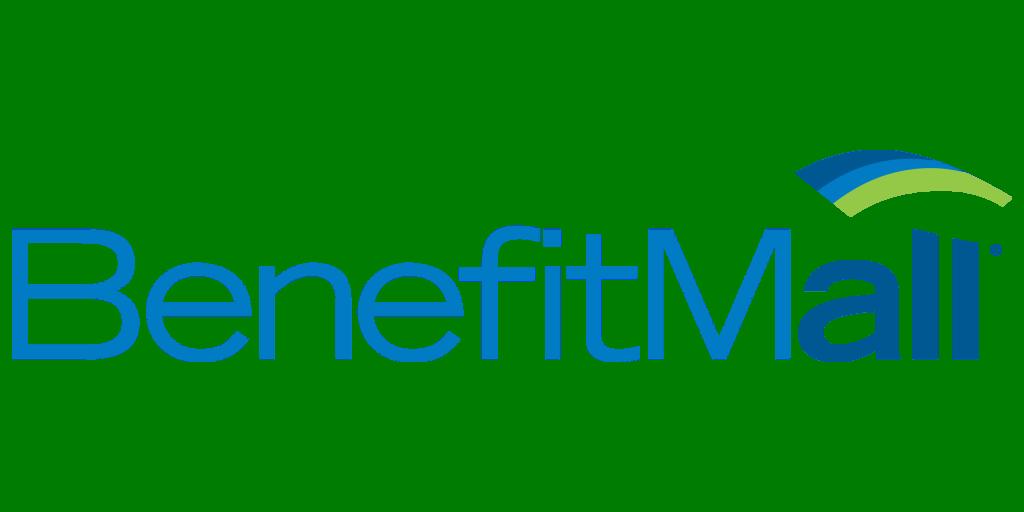
February Compliance Webinar Recording Now Available! We Have a Heart for the Senior Market and Our Brokers!
We wanted to extend our heartfelt gratitude for joining us on Wednesday, February 14th, for BenefitMall's monthly Compliance webinar. We had a fantastic session led by Director of Compliance and Government Affairs, Misty Baker and Carol Taylor, BenefitMall Compliance Analyst.
Throughout the session, we covered Medicare offset, COBRA/Medicare eligibility, and crucial Medicare primary information. Additionally, we were fortunate to have Jessica Brooks-Woods, the Chief Executive Officer of NABIP, join us as a special guest.
Jessica provided invaluable insights into key areas that we're hopeful Congress will address, such as COBRA's recognition as creditable coverage, HSA eligibility concerning Medicare, and a myriad of other pertinent Medicarerelated topics.
If you missed any part of the session, or just want to listen again, you can find the full recording and all slides by clicking below.
WEBINAR RECORDING: https://bit.ly/3uHo5UL
WEBINAR SLIDES: https://bit.ly/49Yaqb1
We hope you will join us again next month as we "March into Compliance Madness"! More info coming soon!

Minority-Owned Businesses Generate $190+ Billion for California
California’s minority-owned businesses are a powerful asset to the state’s economy, generating $28.7 billion in tax revenue and supporting 2.6 million jobs annually, according to a new report issued earlier this month.
The report also found that these minority-owned businesses contribute $192.8 billion in economic output, which is more than the annual gross domestic product (GDP) of 18 U.S. states.
California is home to millions of businesses, with minority-owned small businesses accounting for 45% of all small businesses in the state.
Recognizing the importance of monitoring the status of California’s minority-owned small businesses for evaluating the successes and/or failures of California state and local policies and for evaluating the overall health of California’s population and economy, the California Office of the Small Business Advocate (CalOSBA) commissioned a research report prepared by Beacon Economics, LLC.
Preparation of the “State of Diverse Small Businesses in California” report was aided by California’s largest minority chambers of commerce—the California Asian Pacific Chamber of Commerce, the California African-American Chamber of Commerce, and the California Hispanic Chamber of Commerce—and is the state’s first such report on the economic, fiscal, and social impact of diverse firms across the state.
The report examined businesses from four racial/ethnic groups: Asians, Hispanics, Black/ African Americans, and Native Americans. It referred to Census Bureau data sources from 2019, the most recent data year that all individual data points used were available as of the publication of the report this month.
The report findings will help CalOSBA and private organizations better target supportive government policies and investments for minority firms and entrepreneurs, as well as raise the visibility of their contributions toward job creation, tax revenues, and healthy communities to policymakers in the public and private sectors, the CalOSBA said in a statement.
“This level of detailed data is critical to our effort to effectively promote economic development policy that serves the needs of these businesses on the statewide and local levels. Stakeholders around the state can now plainly see the priority of serving these small-business owners,” said Pat Fong Kushida, president and CEO of the California Asian Pacific Chamber of Commerce.
To read the report’s Executive Summary, go to: https://bit.ly/48mB3F6
For the full report, go to: https://bit.ly/3wnijIx
CALIFORNIA BROKER | 9 CalBrokerMag.com In house legal team Intensive labor law research and analysis Digital compliance dashboard portal Customized solutions Free labor law compliance update notifications Satisfaction guarantee We provide research and supporting products to facilitate employer compliance with labor laws www.globalcomplianceposters.com | www.complianceposter.com 1-800-817-7678 Use Coupon Code: CBMMARCH for 20% discount
Medicare Reforms Support Behavioral Health by Expanding Access to Peer Support Specialists and Community Health Workers
The Centers for Medicare and Medicaid Services (CMS) finalized reforms to Medicare payment for 2024 that will expand access to behavioral health care services. Notably, the reforms increase coverage for services provided by community health workers (CHWs) and peer support specialists. CHWs live in the same communities as the people they serve and use their lived experiences to help identify health concerns and connect people with resources, while peer support specialists help people with behavioral health conditions reach their recovery goals. CMS’s payment changes provide important reforms for Medicare beneficiaries and send signals to Medicaid and commercial insurers, who look to Medicare when making coverage and reimbursement decisions.
Changes to Medicare to Support Behavioral Health
The policy changes provide more flexibility in the types of providers that are eligible to be reimbursed by Medicare and also provide additional resources for both early intervention and crisis intervention services. The reforms also elevate the importance of addressing the social needs of beneficiaries and encourage and support the provision of community-based care. By creating the capacity and flexibility to implement culturally and linguistically effective services, the policies also can help to promote racial equity. Examples of included provisions designed to expand access to behavioral health services include:
• allowing licensed marriage and family therapists and mental health counselors to bill Medicare directly for services
• enabling providers to bill for behavioral health crisis services as part of mobile crisis teams at appropriate rates
• allowing more types of clinicians such as social workers and mental health counselors to bill for the treatment of behavioral health needs related to physical health problems, such as the mental health challenges that come with managing sickle cell disease
• increasing the amount that Medicare pays for psychotherapy codes and some related behavioral health services
• supporting peer support specialists and CHWs to be a part of care teams by covering services that reflect their specific work
• implementing reimbursement for caregiver training services, and
• extending flexibilities to provide some parts of opioid treatment through audio-only telecommunications
New Opportunities for Community Health Workers and Peer Support Specialists
Medicare’s coverage for peer support specialist and community health worker services can help advance equitable access to behavioral health care. The new payments support peer specialists and CHWs in coordinating care and other services, helping people identify and
meet recovery goals, and providing social and emotional support. In 2024, these new codes pay almost $80 per hour, adjusted based on region and site of service. Over the course of the year, assuming a peer support specialist or CHW saw approximately six people per day for hour-long appointments, they could bill more than $100,000. This is a critical potential financing stream for these services and a significant acknowledgment of the contributions of CHWs and peer support specialists to care.
Under the Medicare payment changes, health care practices could offer competitive compensation for peer support specialists and CHWs. A growing body of evidence demonstrates the effectiveness of CHWs and peer support specialists as part of care teams and their importance to the continuum of services. Integrating these practitioners also would support small and underserved health care practices financially, as many of the activities currently provided but not always billed for, such as care coordination and health education.
Most states currently cover peer support services in Medicaid and an expanding number cover CHWs. Medicare coverage offers a clear national template for how to code and value these services across states, signaling to commercial health insurers to align their payment practices as well. With these reforms, reimbursement policies now support widespread access to CHWs and peer support specialists as part of the mainstream behavioral health workforce. The qualifications for peer support specialists and CHWs focus on shared lived experience with populations served, which can increase the cultural and linguistic relevance of care. In addition, peer support specialists and CHWs can be recruited in communities that otherwise face shortages of behavioral health providers, which will help to increase access and expand employment options.
Next Steps for Health Care Practitioners Practices across the country should begin planning now to integrate peer support specialists and CHWs into their array of behavioral health care services. They also can advocate with Medicaid and commercial insurers to promote payment alignment to bolster financial sustainability. Having Medicare coverage of these roles strengthens the argument for commercial health insurers to cover them as well.
The Substance Abuse and Mental Health Services Administration offers resources to support practices in integrating peer support specialists; the U.S. Department of Health and Human Services does as well. By leveraging this payment policy change, practices can more equitably expand access to behavioral health care. — Nathaniel Counts
Senior Policy Advisor for Mental Health to the Commissioner, New York City Department of Health and Mental Hygiene
2024 CONFERENCES
May 6-8,
CAHIP Capital Summit @ Kimpton Sawyer Hotel, Sacramento, Register: http://cahip.com/
June 23-26,
Society for Human Resources Management SHRM24 Annual Conference and Expo @ Chicago, Register: https://annual.shrm.org/
March 13
@12:30pm-6:30pm: CAHIP San Diego Tech-Driven Transformation: Harnessing AI & Technology for Business Growth in the Insurance Industry, Register: https://conta. cc/3UMaKF6
March 15
@5-10PM- Sacramento Association of Health Underwriters (SAHU), Crab Feed 2024 @ Citrus Heights Community Center 6300 Fountain Square Drive, Citrus Heights CA, Register: https://bit.ly/3wsi4Mk
March 17-20
ILTCI Conference Town & Country Resort San Diego, CA Register: iltciconf.org
March 21
@8-10 AM: CAHIP-LA Monthly Board Meeting-March, Register: https://cahip-la.org/
March 21
@ 4:00pm: CAHIP Golden Gate Movie Trivia PAC Fundraiser @ Plank 98 Broadway Oakland CA 94607, Register: https://cahip-gg.org
March 26
@1:00pm: Live Virtual Level-Funded Health Plans Course, Register: https://bit.ly/3UQnZVp
10 | CALIFORNIA BROKER MARCH 2024 CalBrokerMag.com

How State Cannabis Laws Affect Testing, Questions About Use
I’ve heard California law protects employees who use cannabis. Is it true that we can no longer test for, or discipline, an employee who tests positive for cannabis at the workplace?
Although it is true that in the past two years California has enacted laws that change how employers may address cannabis use in the workplace, employers still are permitted to take appropriate steps to enforce a drug-free workplace policy.
Those steps include testing applicants and employees, and disciplining employees for possession of, use of or impairment from any drugs, including cannabis.
Offsite, After-Hours Cannabis Use
Enacted in 2022 and effective on January 1, 2024, AB 2188 added a new protected class to the Fair Employment and Housing Act (FEHA), prohibiting employers from refusing to hire, disciplining, terminating, or otherwise discriminating against an applicant or employee simply because they use cannabis offsite and away from the workplace. The new law makes clear, however, that employers may continue to prohibit possession of, or impairment by, cannabis while on the job.
In basic terms, this means employers may continue to enforce their drugfree workplace policies as it pertains to cannabis, with a new wrinkle. Drug-free policies generally call for drug testing employees as permitted under the law.
In most cases in California, that means conducting drug tests based upon a reasonable suspicion that an employee is impaired at the worksite after observing objective signs such as odors emanating
from the employee, slurred speech, lethargy, or bloodshot eyes.
AB 2188 does not prohibit reasonable suspicion testing for cannabis use; however, it does change the type of testing to which employers may subject their employees.
Under the new law, employers may no longer utilize testing that screens for nonpsychoactive cannabis metabolites. In this view, it generally is understood that employers must utilize saliva tests for active impairment since the chemicals causing impairment have not been metabolized in the saliva.
This testing restriction extends to preemployment drug testing as well. Similar to employee drug testing, AB 2188 does not alter an employer’s ability to require that an applicant successfully complete a preemployment drug screening for cannabis. Again, however, the employer is limited to utilizing only testing that does not screen for nonpsychoactive cannabis metabolites.
Because AB 2188 does not expressly authorize any form of testing, employers are strongly encouraged to consult legal counsel about the best course of action for cannabis screening.
Preemployment Cannabis Inquiries
As a follow-up to AB 2188, in 2023 California enacted SB 700, also effective on January 1, 2024, prohibiting preemployment inquiries into an applicant’s prior cannabis use.
For example, employers may not request information about cannabis use on a job application or in an interview. Further,
unless otherwise permitted by law, an employer may not consider prior cannabis use obtained from a criminal history report.
Exceptions
Both AB 2188 and SB 700 are subject to a few exceptions. Employers who are in the building and construction trades are exempted from both laws.
Unfortunately, there is no definition whatsoever as to what it means to be in the “building and construction trades.” Employers who believe they may fall into that vague and broad category are encouraged to consult with counsel before assuming that the exception applies to their organization.
The second exception applies to applicants or employees hired for positions that require a federal government background investigation or security clearance in accordance with U.S. Department of Defense regulations or other equivalent regulations applicable to other federal agencies.
Lastly, the law states it does not preempt, or override, other state and federal laws that require applicants or employees to be tested for controlled substances.
Column based on questions asked by callers on the Labor Law Helpline, a service to California Chamber of Commerce preferred members and above. For expert explanations of labor laws and Cal/OSHA regulations, not legal counsel for specific situations, call (800) 348-2262 or submit your question at www. hrcalifornia.com.
CALIFORNIA BROKER | 11 CalBrokerMag.com
MARCH 2024
Career Advancement Best Practices in the Age of Remote, Hybrid Work
In Episode 191 of The Workplace podcast, CalChamber Associate General Counsel Matthew Roberts and business coach Nick Warner discuss the career advancement challenges remote workers face and give best practices for creating career opportunities in the current remote workplace environment.
Out of Sight, Out of Mind
A recent article in The Wall Street Journal highlighted new data that remote workers who worked from home five days a week were 35% more likely to be laid off than their peers who put in office time, Roberts says. The study found that 10% of fully remote workers were laid off in 2023, compared to 7% of those who worked in an office full-time or on a hybrid basis.
Warner, founder of Nick Warner Consulting, points out that oftentimes what is out of sight is out of mind. Simon Sinek writes in Leaders Eat Last that studies have shown it’s harder to hurt someone who is in front you.
A study asked participants to shock someone who was standing 30 feet away, and 5% of the participants were willing to press the button. When the person was hidden and never seen by the participants, the percentage of participants willing to press the button shot up to 90%.
This shows, Warner says, that “the further away you are from that power source, the easier it is…for that power source to hurt you.”
But, he adds, it’s rarely one factor that is the source of the issue. Remote workers could be missing out on mentoring opportunities that arise from being present at the office or may miss out on the debriefs and networking that happens in hallways when meetings conclude.
These opportunities can be impactful, he stresses.
An issue the Wall Street Journal article brings up is that some remote workers feel that their managers expect remote workers to complete assignments much faster than in-office employees, Roberts says.
“Managers seem to have some weird, distorted sense of how things get done on a fully remote basis — like they expect everything to be done in 10 minutes,” Roberts recounts from the article.
Is there a misconception, Roberts asks? What are managers missing?
Warner suggests that workers find ways to make sure people know what they’re doing. Some ways to do this are by communicating in different ways online or reaching out to teammates after calls or traveling to interact with office colleagues.
If someone is in a situation where they’re remote but their colleagues are together, they will need to take extra steps and have more awareness; otherwise it could be perilous for that person, he says.
Changing Job Market
The job market is weird right now, Roberts says. Some industries are laying people off, while other industries can’t find enough people.
Warner advises workers and business owners who are experiencing problems in the job market to reevaluate their mindset.
Workers who are set on finding remote work should think about why they want to be remote.
“Being in the office can be a privilege, not a punishment,” he says.
Being in the office can bring mentorship and collaboration opportunities that can advance one’s career, he points out. The debrief that happens after a meeting has ended, for example, is important and is a teambuilding opportunity that remote employees miss out on.
Business owners also should reevaluate their mindset if they’re having issues. For example, Warner says, if you want to have an old-school type of office environment where everyone is here every day, ask yourself, what’s the benefit? Does it need to be everybody?
Could a hybrid model work? If so, employers should assign specific core days and core times that workers should come into the office.
“If we’re going to do it, let’s do it in an organized way that makes sense,” he stresses.
Leadership Advice
In wrapping up the podcast, Roberts asks Warner what advice he has for workers who want to take on leadership roles.
Warner suggests that people ask themselves what their unique value proposition is. What do they do really well and where do they add value to their company? Someone may be very good at something, but they might hate it.
Equally important is to know what someone is not good at. If someone can’t get past what they’re not good at, they can’t evolve, Warner says.
“You have to get proficient because you’re going to be great at the things you’re great at, and our job is to supercharge that and add unique value, but also bring up these trailing issues,” he says.
While some people may actively pursue leadership positions, there are those who, for one reason or another, prefer to stay where they are.
One issue Warner sees in emerging leader training is employees who don’t want to move up into positions of leadership. Warner cautions that people in this situation are in a stage in their career where if they don’t move up, they are casting a shadow on the person behind them, taking away all the growth and air for that person. People with more experience should consider taking on a mentoring role for their organization.
“The value you provide to people around you is so high, not just monetarily and business wise, but also psychically and soulfully to actually help people underneath you,” he says. “You have that skill set, so let’s try to move you from the field into the executive,” he says.
To hear more from Warner, check out his podcast, Together At The Top, where he interviews successful professionals and business owners across all industries.
12 | CALIFORNIA BROKER MARCH 2024 CalBrokerMag.com
Important Updates for Anthem CA Small Group Underwriting Guidelines
As the dynamics of the Small Group Insurance Market in California continue to evolve, Anthem is making the following changes in support of a more flexible underwriting model.
These changes are effective immediately.
An Anthem “Attestation” form will be accepted in lieu of a prior carrier bill, when:
The group has 25 or more enrolled, and
The group is coming out one of the below types of large or multiple employer group scenarios:
Association plan
Trust plan
Non-renewed in large group due to a company size reduction
Spin off from a large employer group.
The attestation can be downloaded by going here: https://bit.ly/42XeWEd
PEO sub/hybrid groups are now eligible to enroll with Anthem Blue Cross:
Groups currently with a PEO (Professional
Employer Organization) that choose to remain in the PEO for various services, must meet the following criteria:
The PEO sub-group must qualify and enroll on a stand-alone basis, separate from the PEO.
Employees of the PEO are not eligible to enroll in the sub-group.
The principal business address of the sub-group must be in California and indicated as such on the Employer Application.
General Agreements, Section K of the Employer Application must be signed by an authorized representative of the sub-group, not the PEO.
COBRA provisions are determined by the sub-group’s size only.
A PEO sub-group letter/attestation must be included with the new group submission paperwork. Go to: https://bit.ly/42XeWEd to download the letter/attestation.
In lieu of a DE9C, the sub-group may submit either payroll records for the most current 3-month period (including the sub-group company name, employee names, social security numbers, wages, withholdings, and summary totals) or a copy of most recent PEO invoice (including sub-group company name, employee names, social security numbers, wages, withholdings, and summary totals).
Underwriting Guidelines for PEO hybrid/ sub groups can be accessed by going to: https://bit.ly/42XeWEd
As always, if you have any questions or would like additional information, please reach out to your BenefitMall Sales Team.
SMART WATCH AND RINGS MEASURING BLOOD SUGAR WARNING
Smartwatches and rings that claim to measure blood sugar levels for medical purposes without piercing the skin could be dangerous and should be avoided, the U.S. Food and Drug Administration warned Wednesday.
The caution applies to any watch or ring, regardless of brand, that claims to measure blood glucose levels in a noninvasive way, the agency said. The FDA said it has not authorized any such device.

The agency’s notice doesn’t apply to smartwatch apps linked to sensors, such as continuous glucose monitoring systems that measure blood sugar directly.
Roughly 37 million Americans have diabetes. People with the disease aren’t able to effectively regulate their blood sugar because their bodies either don’t make enough of the hormone insulin or they have become resistant to insulin.
To manage the condition, they must regularly check their blood sugar levels with a finger prick blood test or with a sensor that places needles just under the skin to monitor glucose levels continuously.
Using the unapproved smartwatch and smart ring devices could result in inaccurate blood sugar measurements, with “potentially devastating” consequences, said Dr. Robert Gabbay, of the American Diabetes Association. That could cause patients to take the wrong doses of medication, leading to dangerous levels of blood sugar and possibly mental confusion, coma or even death.
Several companies are working on noninvasive devices to measure blood sugar, but none has created a product accurate and secure enough to get FDA approval, said Dr. David Klonoff, who has researched diabetes technology for 25 years.
The technology that allows smartwatches and rings to measure metrics like heart rate and blood oxygen is not accurate enough to measure blood sugar, said Klonoff, of the Sutter Health Mills-Peninsula Medical Center in San Mateo, California. Efforts to measure blood sugar in body fluids such as tears, sweat and saliva are not ready for prime time, either.
In the meantime, consumers who want to measure their blood sugar accurately can buy an FDA-cleared blood glucose monitor at any pharmacy.
“It comes down to risk. If the FDA approves it, the risk is very small,” he said. “If you use a product that is not cleared by the FDA, very often the risk is very large.”
The Associated Press Health and Science Department receives support from the Howard Hughes Medical Institute’s Science and Educational Media Group. The AP is solely responsible for all content.
MARCH 2024 CALIFORNIA BROKER | 13 CalBrokerMag.com
Shine the Light
Eight outstanding industry professionals are honored here
By Emma Peters
What makes someone outstanding at their job? Some might respond and say an unwavering commitment to clients. Some might propose that they are adaptable and innovative thinkers. Some may even say it’s as simple as approaching their work and their clients with empathy and kindness. At California Broker Magazine, we understand that it takes all these qualities and more to be an outstanding professional in the industry. In December, we asked our subscribers to join us as we launched our first annual recognition program called “Shine the Light”. We were looking to honor professionals who were an example for others in the industry — those who shine by providing consistently excellent solutions for their clients, address their client’s issues with collaborative partners, and demonstrate unfailing commitment to their work. Thankfully, many of our subscribers delivered, and nominated colleagues who fit these criteria and more! The nominees of this award received a free print subscription for one year of our magazine and a free basic e-Directory listing at www.ca-brokerdirectory.com
Here are the first eight awardees of the “Shine the Light” recognition. They were nominated by peers or colleagues who provided a short summation explaining why these professionals deserve to be considered. We included this summary and the three professional goals for 2024 that each awardee provided. You will also find their contact information and a link to their website.
It’s important that we recognize those who are making strides in our industry and pave the way for others to do the same! We are so grateful to have committed California insurance professionals in our midst who work with such a commitment to excellence!
14 | CALIFORNIA BROKER MARCH 2024 CalBrokerMag.com 2023 AWARDEES

 Dorothy
Dorothy
M.
Cociu RHU, REBC, GBA, RPA
Advanced Benefit Counseling
714-693-9754
dmcociu@advancedbenefitconsulting.com
At the heart of Dorothy’s achievements is her groundbreaking podcast, “Benefits Executive Roundtable,” with its fifth season now available. Through this platform, Dorothy reaches over 40,000 listeners as she effortlessly cuts through the confusion surrounding State and Federal mandates, programs, and proposals. As a compliance and cybersecurity expert, she stands at the forefront of addressing critical issues in the industry. Her dedication to staying ahead of the curve in these evolving fields showcases her commitment to excellence. Dorothy’s impact also extends to her role as the Vice President of Communications for CAHIP-OC (California Association of Health Insurance Professionals - Orange County). In this capacity, she has been instrumental in fostering communication within the organization, including publishing the bi-monthly County of Orange Insurance News (COIN). In addition to her podcast and expert roles, Dorothy generously shares her knowledge through teaching continuing education courses and contributing articles to national magazines. Dorothy’s distinction extends to her unparalleled commitment to clients and exceptional customer service. Her personalized approach ensures that each client receives tailored solutions that exceed expectations. As evident from her achievements, Dorothy is not merely a health insurance professional; she is a guiding force, illuminating the path for others in the industry.
Three goals:
1. To provide quality educational programs to our clients and others
2. To provide quality written articles with strong and impactful content
3. To produce informative and meaningful podcasts for our clients and the public with quality guests and educational content
Ariana Brill
Ask Ariana Healthcare Access
619-432-2524
help@askariana.com
Ariana Brill started her healthcare career about 8 years ago, helping friends and family with a notebook and her cellphone. Over the last four years she has grown a small, but powerful team of agents that have provided over 6,000 Californians with easy and effective healthcare. Without her, I know many of our clients would still be struggling to this day. Ariana is a huge supporter of her city, Davis. She’s well known and loved by everyone there, and her name has spread far and wide from word of mouth and referrals. She does no marketing for her company; she thrives solely on her reputation and caring heart. We’ve been recommended by Social Services in multiple counties, major medical companies (such as Sutter, UC Davis, UCLA), and many more reputable institutions. She has also formed alliances with many small clinics, private practices, and treatment centers all throughout California. I cannot think of anyone better or more deserving for this award.
Three goals:
1. Helping as many low-income folks as possible to get access to affordable healthcare
2. Growing my team
3. Taking a much-needed vacation

Dr. Thelá Thatch
Thelá
818-730-7947
thela@thelathatch.com
Dr. Thelá Thatch, the visionary founder and Chief Equity Officer of Thelá Thatch Consulting, stands as a true pioneer in the field of equity and transformation. Over a distinguished 20year career, she has honed her expertise across diverse domains, including human resources, talent management, organizational development, and diversity and inclusion. Among her notable accomplishments, Dr. Thelá served as an executive consultant for the Los Angeles County Department of Health Services, where she revolutionized human capital strategies to empower those assisting the homeless and vulnerable. She also left her mark at Live Nation Entertainment, introducing the firstever diversity program in a global organization boasting over 10,000 employees. Additionally, her leadership as Head of DEI at Paychex underscored her commitment to driving positive change. Beyond her corporate roles, Dr. Thelá is a scholar and author, holding a Ph.D. in public policy and administration with a specialization in law. She contributes as a faculty member at prestigious institutions like Walden University, the University of West Los Angeles, and Neumann University. She participates on numerous boards that support Central America and Africa. Her writings have been featured in Upscale, BE Magazine, LA Times, and numerous publications.
Three goals:
1. To position myself as a thought leader in the field of human resources, benefits, and equity.
2. To share my revolutionary “MRS HR in a Box ©” virtual learning and resource system with businesses seeking human resources and benefits support.
3. To position my latest book, The Diversity Dilemma, as a resource for transformative and influential work within organizations. The Diversity Dilemma will serve as a cornerstone resource for individuals, organizations, and academic institutions seeking profound insights into the nuanced impact of justice, equity, diversity, and inclusion (JEDI)
MARCH 2024 CALIFORNIA BROKER | 15
CalBrokerMag.com
Thatch
Consulting
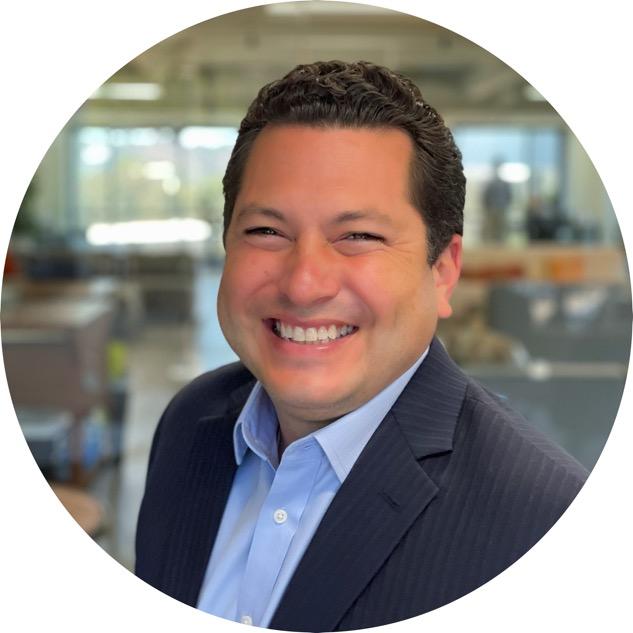
Jonathan Benet
C3 Insurance
Jonathan.benet@c3insurance.com
With an impressive 12-year track record in the industry, Jonathan Benet has proven himself a standout broker within the rapidly growing C3 Risk & Insurance company. Jonathan’s passion and unwavering dedication to his work position him as a top contender for the title of a top producer within C3. His recent recognition with the Spirit of C3 Producer Award underscores his commitment to embodying the core values of the company in every aspect of his professional life. Beyond his contributions to C3, Jonathan is actively involved in various community initiatives, showcasing his commitment to making a positive impact beyond the business realm. He holds a prestigious position as a member of the Otay Mesa Chamber of Commerce President’s Circle and serves as the treasurer on the School Safety Institution board. Additionally, he holds the position of Vice President on the Cathedral Catholic High School Alumni Association Board and is a dedicated member of the Loyola Marymount University Latino Alumni Association. Hailing from San Diego, CA, Jonathan’s roots in a Latino family have shaped his values and priorities. Raised with a strong emphasis on faith, family, and education, he carries these principles with him in both his personal and professional life. What sets Jonathan apart in the Employee Benefits space is his unique approach. His bilingual proficiency, focus on education, commitment to non-pressure sales, and genuine attentiveness to clients’ needs and challenges distinguish him as a broker who goes above and beyond. Jonathan Benet is not just a broker; he is a trailblazer, a community advocate, and a driving force for positive change in the insurance industry and beyond.
Three goals:
1. Make the internal C3 top producer trip.
2. Write one new non-profit group pro bono.
3. Join a new industry association.

Naama O. Pozniak
A+ Insurance Service
818-508-7177
naama@rightplan.com
As a market disruptor and influencer, Naama is an Associate Publisher and Editorial Board member of Cal Broker magazine, NAHU Region 8 Media Chair, and serves on the LAAHU’s board as a HUPAC Chair. In addition, she has led meditation sessions with dozens of organizations over the past 10 years, including Women in Cloud, major insurance carriers, BenefitsPro, ASCEND, and the National Association for Health Underwriters, and serves as Chief Mindful Officer for Next Gen Mastermind. She brings wisdom for holistic wellness, leadership, and healthcare costs discussions directly to industry stakeholders in the hybrid meta workforce environment. She has developed and led two continuing education courses approved by the Departments of Insurance in California, Florida, Arizona, Nevada, and Texas. These courses have shown that implementing an intelligent heart connection and 360-degree care will reduce stress, help us know ourselves better, create happiness, reduce the costs of care, and raise collective awareness. She is a NFT curator, collector, and is the Founder/CEO of Paz Holding, Inc./ RightPlan.com/LetzGetPhygital. A lifelong yogi, Primordial Sound Meditation coach Naama O. Pozniak also brings Web3 conversations and panels to many industries around the globe. In addition, she shares a unique style and balance of proven women's leadership in Web3 and corporate wisdom across professions.
Three goals:
1. Publish my book.
2. Foster community and collective movement – physically/emotionally/spiritually
3. Expanding the revolutionary corporate mindful self-awareness for healing through empathy, compassion, and peace.

hasina.anderson@usi.com
“I would like to nominate Hasina Anderson for this Health Insurance Professional Award of 2023! I have worked with Hasina over the past year, and she is one of the most energetic, positive and caring people whom I have ever worked with. While I am on the Property & Casualty side of the insurance business, Hasina handles Health and Benefits insurance, and we frequently partner up on accounts. I find Hasina to be sincerely enthusiastic about helping companies and individuals to provide the very best health, wellness and comprehensive benefits packages for companies. She not only has extensive knowledge, but she’s a great listener, and can design and deliver the very best programs for customers. Plus, she practices what she preaches; Hasina shares an educational series with the HR and Benefits community on LinkedIn every Tuesday called “Shining Bright: Hasina’s Guide to Benefits, People and Culture Gems”. She’s also a connector, organizing special wellness events for Human Resource professionals, including hikes, yoga and spa days! Hasina is a bright, shiny star, very deserving of this award”
Three goals:
1. Obtain CEBS (Certified Employee Benefit Specialist) certification to enhance my skills, position myself as a credible expert in the field and strengthen my knowledge in emerging trends within the employee benefits landscape and broker community.
2. Collaborate with HR, Risk Management and Finance teams to align benefits strategies with organizational goals, emphasizing the importance of employee well-being, safety and satisfaction as key contributors to shareholder value while implementing a tailored benefit package.
3. Facilitate workshops and training sessions to educate HR professionals on integrating benefits initiatives with broader company strategies, both internally and externally, while fostering Benefits, People & Culture.
16 | CALIFORNIA BROKER MARCH 2024 CalBrokerMag.com
USI Insurance Services 925-214-0157
Hasina Anderson

Jami Mcnees
Thrive Health Insurance Services
951-265-2784
jami@thehealthinsurancelady.com
“I have had the privilege to work alongside an agent with true character and integrity in our area for the last 5 years. Jami McNees has been a health insurance professional for quite some time now in the Temecula Valley region of Southern California. She is a cancer survivor and advocate for several organizations, including Micheles Place Cancer Resource Center. Jami takes the time to provide top quality needs assessments to anyone who calls upon her. She spends countless hours providing numerous resources to those afflicted with cancer and her many clients and friends she has made. She also donates numerous hours a year and thousands of dollars out of her own pocket to bolster non-profits and to those with cancer and the less privileged. Jami is also an accomplished author and public speaker at local community talks.
Three goals:
1. Educate my clients on access to care in the region they reside
2. Encourage clients to use the “free” extra benefits that are being offered with their coverage
3. Equip employers with information to position their contribution toward health benefits for their employees as a critical benefit to their employee’s overall health and wellbeing

Wayne Guzman
Inland Empire Health Plan
909-727-5212
Wayne.Guzman@iehp.org
“In March 2023, Wayne was hired by the Inland Empire Health Plan to launch its first commercial health plan in its 27-year history and become the 2nd only public entity health plan to join the Covered California exchange. From competitive analysis, marketing, and communications, contracting and legal, compliance, education and training, IT and broker support systems, member services, finance, broker incentive structure, plan benefits design, team recruiting, and delivery on IEHP Covered new member enrollment results, Wayne has been instrumental in the successful launch and implementation of the new IEHP Covered plans and this historic broker partnership with more than 500 certified agents choosing to get appointed with IEHP.
His extensive professional relationships and vast industry experience including his decade plus tenure as a Covered California Certified Agent, Broker Relations Manager, and Benefits Consultant, coupled with his recent project management work on the pending Medi-Cal Redetermination effort provided him many of the skills needed to contribute to the successful launch of the new IEHP Covered Plans with more than 17,000 individuals choosing IEHP Covered for their health care coverage”
Three goals:
1. Expand and develop our new IEHP Broker Partner relationship by creating the following - New IEHP Broker Advisory Group, and New IEHP Broker value proposition marketing campaign to educate consumer on benefits of working with a Broker
2. New IEHP Broker L&D materials to help deepen the knowledge and understanding of Medical and its interrelationship with commercial insurance
3. New IEHP Broker Partner Co-Branding materials to support partnership growth.







MARCH 2024 CALIFORNIA BROKER | 17 CalBrokerMag.com
C A L I F O R N I A B R O K E R M E D I A G R O U P D i g i t a l e - M a g a z i n e W e e k l y e - N e w s l e t t e r W e b s i t e H o t P r o d u c t e m a i l b l a s t c a m p a i g n s e - D i r e c t o r y ADVERTISE OUR MARKETING ADVANTAGE Embracing the Embracing the Digital Marketing Digital Marketing Frontier Frontier WITH Top Choice for Marketing to over 120,000 California Insurance Brokers DIGITAL MEDIA INCLUDES: P h i l C a l h o u n 7 1 4 - 6 6 4 - 0 3 1 1 p u b l i s h e r @ c a l b r o k e r m a g . c o m

Medical doctors are increasingly in demand amid severe MD shortages. As baby boomer MDs retire, American healthcare providers have fewer and fewer medical school graduates to replace retirees. At the same time, the U.S. healthcare market is seeing unprecedented demand growth.
According to recent studies, demand will likely continue to outpace supply. In fact, models indicate that physician shortages will be widespread across the U.S. by 2030. Understanding the dynamics that affect medical practitioner availability can helpinsurance professionals address the challenges and potentially curb the shortage.
Explaining the Shortage of Medical Doctors in the U.S.
The medical doctor shortage in the U.S. is nothing new, especially in rural areas. However, the physician workforce shortage has become progressively worse in recent years for several reasons.
Increased Demand for Medical Services
A major driver of doctor shortages is increased patient demand in the U.S. population. More people are seeking medical services due to the following factors:
• More insurance coverage through the Affordable Care Act
• Aging U.S. population
• Longer life expectancy
• U.S. general population increase
• General decrease in U.S. health
Chronic conditions such as diabetes, Alzheimer’s, and cancer require direct treatment by a physician. In many cases, care must be managed by a specialist. As demand for medical assistance increases, medical schools, government entities, and healthcare providers are looking for ways to provide the care patients need.
Challenges of Accessing Medical Doctors In the Future
Baby Boomer MDs Retiring
At the same time, many medical providers, especially those from the baby boomer generation, have reached retirement age. They are leaving private practices, hospitals, and other medical facilities, which aren’t finding new doctors to replace them. The doctor retirement impact extends beyond losing MDs. Retired physicians also add to the patient burden. Aging doctors still need medical treatment, and older patients generally require more medical care. This doubles the pressure on an already strained medical system.
High Medical School Costs
In an ideal world, medical schools would provide a new crop of fully trained graduates every year to replace those leaving the field. However, in recent years, this has not been the case.
This may seem surprising, as medical school enrollment has actually increased over the past 20 years. Medical school graduation rates have also remained relatively stable over the past two decades, according to the Association of American Medical Colleges. So if medical students are matriculating and graduating at a steady pace, why are there fewer medical doctors?
Perhaps the answer is that there are not fewer doctors, but there are fewer medical doctors in certain specializations. For instance, primary care physicians receive less income per capita than other specialists. Faced with the prospect of high medical school costs, many med students opt for higher-paying specialties in urban areas. In other cases primary care physicians elect to acquire practices in rural areas where they chose to practice medicine due to lifestyle issues.
LOOKING FORWARD
18 | CALIFORNIA BROKER MARCH 2024 CalBrokerMag.com
Medical Education and Training Time
To obtain a medical license to practice, medical students must undergo education and training that can take more than a decade. Cost considerations aside, it takes time to replace aging physicians. When over half of the existing physicians in the U.S. are over 55, a steep dropoff is inevitable, even with medical school applications up.
In addition, international medical graduates (IMGs) are facing unprecedented legal and political issues related to immigration. Delayed green card applications and immigration proceedings further strangle an already thin flow of upcoming new physicians. Many of these IMG physicians can help fill in for retiring doctors once they are able to enter the system.
Fewer MD Positions in Desirable Locations
Rural areas are notoriously underrepresented when it comes to health care. Unfortunately, patients in these areas tend to need more, not less, medical attention.
The shortage of medical doctors there can be tied to numerous factors, including:
• Fewer insured individuals
• Older patients with worse health issues
• Patients on fixed incomes
• Hospital closures
• Lack of internet access for telehealth
• Fewer Large health care systems working in these areas.
Medical school graduates, especially specialists, need an established facility to practice. When local hospitals are closed, doctors may hesitate to open a private practice where patients are typically lower income, older, and in worse health.
Lifestyle considerations also come into play. Graduates in their 20s and 30s may be inclined to live in urban settings where they can earn more and be closer to friends, family, and activities they enjoy.
Heavy Administrative Burdens and Doctor Burnout
Doctors face an unprecedented level of stress caused by administrative duties, political pressure, and chronic understaffing. Pressure and division that mounted during the COVID-19 pandemic have only grown as the burden on the healthcare system has increased.
Physicians have reported extensive burnout due to paperwork, administrative overwhelm, and political challenges. Many doctors chose to leave a specialty, relocate, or depart the field altogether due to the pressures they faced.
Measures Being Taken to Boost MD Numbers
Medical schools, healthcare providers, and governments are working together to address the doctor shortage crisis. In 2020, the federal government added 1,000 Medicare-supported graduate medical education (GME) positions. These jobs are designed to target underrepresented communities.
For states like California, with thousands of residents in training, the additional positions could help bridge the MD gap. According to AAMC, California has 15 MD- and DO-granting schools and 107 teaching hospitals, with 9,095 residents in training.
Top Medical Schools in California
Education quality and affordability are crucial to ensure the success of future medical school graduates. The following California medical schools were ranked in 2023 by U.S. News and World Report.
• University of California – San Francisco (UCSF), Davis, Los Angeles, San Diego, Irvine, Riverside
• Stanford University
• University of Southern California – Keck School of Medicine
• Western University of Health Sciences – College of Osteopathic Medicine of the Pacific
• Touro University California – College of Osteopathic Medicine
While this list reflects California’s best primary care programs, rankings vary depending on the school’s specializations. For example, Stanford University ranks at the top for medical research, while UCSF is the best California medical school for anesthesiology and surgery.
Key Medical Specialties in California
Primary care physicians are just the tip of the iceberg when it comes to the doctor shortage. Medical facilities also need specialists. Medical specialization ensures patients receive targeted care when their injuries or ailments are beyond the abilities of a primary care doctor. Key specializations include:
• Cardiology
• Oncology
• Anesthesiology
• Internal medicine
• Obstetrics and gynecology
• Oncology
• Surgery
• Pediatrics
• Radiology
• Psychiatry
Some specialized medical doctors require assistance from experts in other fields. For instance, a surgeon will often work with anesthesiologists to ensure patient comfort during a procedure. When some specializations go missing, an entire local health system often struggles.
As the doctor shortage grows, medical schools, governmental organizations, and healthcare organizations must continue to work together. Training new doctors, reducing workplace pressure, and prioritizing underserved communities are all part of the multi-pronged approach necessary to ensure that patients throughout the U.S. receive the medical care they need.
For Health Insurance Professionals and Their Clients
When working with clients, health insurance professionals need to be aware of the facts and challenges their clients have when accessing physicians. As a client advocate, health brokers need to be prepared to help facilitate when necessary the first steps after a successful enrollment, confirm an MD is accepting new patients and ask how long the wait is for an appointment, and connect your client with their primary care physician for the annual physical or preventive services visit. Working with the doctor’s office to assist your client to schedule a new patient visit significantly enhances your client’s experience, you do your job as the advocate, and you open the door to build a relationship with the doctor and the staff. Some alternatives to an in office visit include TeleMed and other online resources which can help your client access information, set appointments, fill prescriptions, and more. Also educating clients how to “triage a medical need” can be another way to place the client’s need for medical help to open options to an in-office appointment while maintaining the proper level of care and timeliness they desire. In some cases a Nurse Practitioner (NP) or Physician Assistant (PA) can extend the ability of a primary care physician or a medical group to meet the needs their patients have for service. It is possible for a health broker to both recommend physicians who accept new patients and also go the extra step to build a relationship with the office and learn if the primary care physician has a NP or PA who might be open for a appointment sooner than the doctor. And finally, at some point, the requirement to access timely care will be tested more often with the shortages outlined in this article. See Client Success Stories page 42 in this issue for info so you know how to help your clients with access to care and be the best advocate for your clients as possible.
MARCH 2024 CALIFORNIA BROKER | 19 CalBrokerMag.com
Posting Compliance in the Workplace
“Compliance” may not be at the top of your daily to-do list. Matters of compliance may never come across your desk. Perhaps, you avoid these folks altogether. Compliance isn’t everyone’s cup of tea. Still, in business compliance is unavoidable. It’s like a program always running in the background. Your business can’t run without it. The good news is that businesses have more opportunities to outsource compliance responsibilities, leaving them free to do and serve their intended purposes.













What is Compliance?
What do we mean when we use the term “compliance”? Generally, compliance refers to a business entity’s ongoing responsibility for adhering to a common, non-negotiable set of legal standards. The manner of compliance, and the extent to which compliance must be substantiated, typically depends on the industry, size, and location of the organization and the regulatory framework in which it operates. For some businesses, compliance might be a one-man job. For others, compliance affairs can be extensive, highly sophisticated, and unnervingly technical. There are a number of liability pitfalls associated with these compliance standards. Mistakes can be costly, both financially and to the wellbeing of the business’s workforce.
Brokers have a keen understanding of how the regulatory environment impacts their clients and know the value of building strong client relationships to address compliance challenges. Because the business of brokering is also very forward-thinking, brokers are expected to offer their clients practical solutions to present-day compliance challenges and be attuned to the expanding regulatory climate. The cost of doing business has never been higher than it is today and, as the market grows and shifts, it just makes good sense for businesses to build these strong partnerships and, where possible, to outsource compliance responsibilities to trusted partners.
If these Walls Could Talk


Labor law posting compliance is one area where every business, regardless of industry, size, or location can benefit from an efficient outsourcing relationship.
Labor law posting compliance refers to a business’s responsibility for posting all government-mandated labor law notices in the workplace to inform employees of their rights and obligations under the applicable laws. It is a practice dating back to 1880, when Massachusetts enacted the first piece of legislation requiring employers to post a labor law notice informing employees of the State’s limitation on work hours. Labor law posting was born as an enforcement tool, giving employees the opportunity to “tattle” on unscrupulous employers, empowering employees to act as right-enforcers themselves, and as a means of driving employer compliance prophylactically. From a historical perspective, labor law postings are an interesting reflection of evolving work values and culture.
Anatomy of a Labor Law Poster
Nearly everyone who has ever had a job is familiar with labor law postings. They are typically located on employee bulletin boards, in break rooms, and in Human Resources offices. Casual observation of these posted notices shows how complex labor law posting has become. Because employers are required to post so many labor law postings and changes are frequent, many employers choose to meet their posting obligations by posting a single, wide-format “all-on-one” poster, outsourced from a commercial labor law poster vendor, containing each of the separate posting pieces that businesses commonly require.
20 | CALIFORNIA BROKER MARCH 2024 CalBrokerMag.com
If these Walls Could Talk…
COMPLIANCE TIME OFF TO VOTE Your Employee Rights Under the Family and Medical Leave Act How do request FMLA leave? FMLA leave was previously taken approved for the same reason What does my employer need to do? the same basis as you had not taken leave, and How much of your requested leave, any, will be FMLA-protected Where can I find more information? Your Employee Rights Under the Family and Medical Leave Act What is FMLA leave? Am eligible to take FMLA leave? How do I request FMLA leave? scan Know Your Rights: Workplace Discrimination is Illegal EMPLOYEE RIGHTS EMPLOYEE POLYGRAPH PROTECTION ACT The Employee Polygraph Protection Act prohibits most private employers from using screening or during the course of employment. SAFETY AND HEALTH PROTECTION ON THE JOB to do so could result substantial penalty. Cal/OSHA standards can be found at www.dir.ca.gov/samples/search/query.htm. You must be aware hazards your employees face on the job and keep records complaint and request an inspection of your workplace you believe conditions there complaints with the California Labor Commissioner’s Office.) Consult your local records employee exposures potentially toxic materials harmful physical WHEN CAL/OSHA COMES TO THE WORKPLACE: Inspections are also conducted when an employee files valid mplaint with Cal/ Orange County Consultation Region Office Long Beach 1500 Hughes Way, Suite C-201, Long Beach 90810 800 Royal Oaks Dr., Ste. 105, Monrovia 91016 (626) 239-0369 800 Royal Oaks Dr., Ste. 105, Monrovia 91016 (626) 471-9122 Call the FREE Worker Information Helpline – (833) 579-0927 DIVISION OF OCCUPATIONAL SAFETY AND HEALTH (CAL/OSHA) Department (EDD) required by the California Unemployment Unemployment Insurance (funded entirely by employers’ taxes) fault your own. To claim UI benefit payments you must also meet eligibility (edd.ca.gov/UI_Online) get started. Representatives are available the following toll-free numbers, Monday English Spanish Unemployment Insurance Application (DE 1101I), will display. For faster and more wage replacement benefits eligible Californians who are unable work due to newly hired employees and to each employee who unable work due non(edd.ca.gov/SDI_Online) get started. TTY (for deaf hearing-impaired individuals only) available at 1-800-563-2441. UI DI Notice to Employees: to Employees: PFL THE RIGHTS OF EMPLOYEES WHO ARE TRANSGENDER OR California Min mum Wage $1–-Effective January 1, 2023 Minimum Wage: $15.50 per hour OFFICIAL NOTICE California Minimum Wage YOUR RIGHTS AND YOU ARE PREGNANT, HAVE CHILDBIRTH, PLEASE READ THIS NOTICE. YOUR EMPLOYER HAS AN OBLIGATION TO FOR PREGNANCY DISABILITY LEAVE EMPLOYEE RIGHTS UNDER THE FAIR LABOR STANDARDS ACT FEDERAL MINIMUM WAGE $7.25 EMPLOYEE RIGHTS FEDERAL MINIMUM WAGE $7.25 It the public policy of the State of California encourage employees notify an appropriate government law enforcement agency, person with authority over the employee, another employee with authority to investigate, discover, correct the violation or noncompliance, and to provide information to and testify before public body conducting an investigation, hearing or inquiry, when they have reason to believe their employer violating state or federal statute, violating or not complying with local, state or federal rule or regulation. Who is protected? California Labor Code Section 1102.5 of individuals. “Employee” means any person employed by an employer, private or public, including, but not limited to, individuals employed by the state any subdivision thereof, any county, city, city and county, including any charter city or county, and any school district, community college district, municipal public corporation, political subdivision, or the University California. Code Section 1106 What is whistleblower? A “whistleblower” is an employee who discloses information to government or law enforcement agency, person with authority over the employee, or another employee with authority investigate, discover, or correct the violation or noncompliance, or who provides information or testifies before public body conducting an investigation, hearing or inquiry, where the employee has reasonable cause to believe that the information discloses: 1. violation of state or federal statute, With reference employee safety health, unsafe working conditions or work practices in the employee’s employment or place employment. whistleblower can also be an employee who refuses to participate an activity that would result in violation of state or federal statute, or violation of noncompliance with local, state or federal rule or regulation. What protections are afforded to whistleblowers? An employer may not make, adopt, or enforce any rule, regulation, or policy preventing an employee from being whistleblower. An employer may not retaliate against an employee for refusing participate in an activity that would result violation of state federal statute, or violation or noncompliance with state or federal rule or regulation. An employer may not retaliate against an employee for having exercised his her rights as whistleblower in any former employment. Under California Labor Code Section 1102.5 an employer retaliates against whistleblower, the employer may be required to reinstate the employee’s employment and work benefits, pay lost wages, and take other steps necessary to comply with the law. How to report improper acts you have information regarding possible violations of state federal statutes, rules, or regulations, violations fiduciary responsibility by corporation or limited liability company to its shareholders, investors, or employees, call the California State Attorney General’s Whistleblower Hotline at 1-800-952-5225 The Attorney General will refer your call to the appropriate government authority for review and possible investigation. STATE OF CALIFORNIA DEPARTMENT OF INDUSTRIAL RELATIONS Division of Workers' Compensation Notice to Employees--Injuries Caused By Work Doctor visits, hospital services, physical therapy, lab tests, x-rays, medicines, Report Your Injury. Report the injury immediately your supervisor an employer (Enter “self-insured” appropriate) workers' compensation benefits or payments guilty felon and may fined and imprisoned. PAY DAY NOTICE o MONDAY o FRIDAY MONTHLY o FAMILY CARE & MEDICAL LEAVE & PREGNANCY DISABILITY LEAVE have the right take job-protected leave condition, or to bond with new child (via law also requires employers to provide jobchildbirth, related medical condition. CALIFORNIA LAW PROHIBITS WORKPLACE DISCRIMINATION & HARASSMENT that protect you from illegal discrimination and harassment in employment based on your actual or perceived: CALIFORNIA LAW PROHIBITS WORKPLACE DISCRIMINATION & HARASSMENT TO REORDER CALL: 1-800-817-7678 WWW.COMPLIANCEPOSTER.COM 83705 012024 EMERGENCY NUMBERS AMBULANCE: FIRE–RESCUE: POLICE:
Official labor law postings are used to inform employees of their substantive rights and protections under a variety of federal, state, and local laws and simultaneously remind employers of their legal obligations. They are collected from multiple government agencies covering wage and hour laws, civil rights laws, workers’ compensation laws, unemployment rights, medical and family leave laws, child labor laws, and occupational safety and health standards. The U.S. Department of Labor alone lists sixteen different postings. Some states require upwards of fourteen labor law postings. More, if posting is required in multiple languages. There are additional posting requirements for specific industries, employers, and occupations.
Like the number and complexity of labor law postings, the consequences for posting noncompliance has become more serious and costly. Nearly every labor law posting requirement is accompanied by a fine, penalty, or other liability. For example, failing to post the federal OSHA posting may result in a penalty of up to $16,131. Penalties for failing to post state-required postings are lower, generally in the range of $100 to $5,000. Penalties may be calculated on a per violation, per employee, or daily basis. In addition, posting laws often grant employees a private right of action and the damage awards can be significant. Posting violations can also result in the loss of legal defenses and the suspension or revocation of a business’s operating license. Given the severity of the consequences, choosing to partner with a commercial all-on-one poster vendor to maintain compliance really becomes a no brainer.
Tips on Choosing Your Next Compliance Poster Vendor
Because posting compliance is responsive to changes in the labor market, the global economy, advances in technology, and societal expectations, it is a job that is never “done.” It takes a considerable amount of time and insight to stay on top of changes in posting requirements, track down postings from various government agencies, and monitor bulletin boards to ensure that all postings are present and in good condition. Without trained guidance, businesses can easily get left behind. It is difficult to image any scenario where a business wouldn’t experience significant value by using a labor law poster vendor.
As with any industry, some compliance poster vendors are better than others. In choosing a poster vendor, it is important to know the level of service and the products you can expect to receive. The following are some of the features to consider in selecting your next compliance poster partner:
Compliance Poster Company is offering California Broker Subscribers a 20% discount on phone or online orders. The discount expires March 31, 2024.
For online purchases, the coupon code is: CBMMARCH. Go to www.complianceposter.com
For phone orders, buyers need to mention to the Compliance Advisor that they saw the offer in California Broker Magazine and give the code CBMMARCH.
www.complianceposter.com Simplify and Save 20%.
Like the number and complexity of labor law postings, the consequences for posting noncompliance has become more serious and costly. Nearly every labor law posting requirement is accompanied by a fine, penalty, or other liability.
• A well-trained, knowledgeable, clientdedicated staff of compliance advisors
• Access to a qualified, in-house legal team
• Ongoing support for your compliance products
• Organization-specific compliance strategies and posting audits
• Advance notice of posting changes
• Optional legislative updates
• The freedom to choose among compliance products, including pay-asyou-go options, subscription services, poster customization, and electronic products
• Accurate billing support and reporting technology
• Accurate delivery systems and fulfillment options
• Durable and sustainable materials
• In-house and on-demand printing capabilities with state-of-the-art equipment
Start by exploring various vendors’ websites and then contacting the vendors directly. Ask questions, request samples, and inquire about guarantees. You should feel confident that your vendor can meet your organization’s needs and expectations. If the choice is made wisely, going with a compliance poster company can easily avoid the risks of going solo.
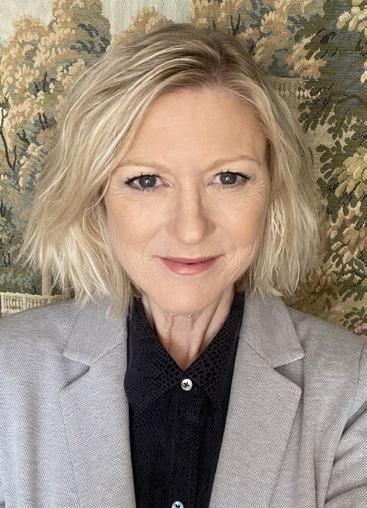
Kathy White manages the Department of Legal Research and Compliance Products at Global Compliance/ Compliance Poster Company (“CPC”) located in Monrovia, California. Kathy leads the in-house legal and graphics teams, tracking changes in employment, labor, and workplace safety laws, and providing employers with information and tools to facilitate compliance responsibilities. Kathy has been with CPC for 15 years.
She received her J.D., cum laude, from the Southwestern University School of Law, where she was an editor and writer on the Law Review, and an oralist and writer in the Moot Court Honors program. She received her undergraduate degree with honors from the University of California, Los Angeles. Kathy came to CPC with over 20 years of big-firm experience representing employers in litigation and proactively counseling employers on issues related to employment and labor law compliance.
CalBrokerMag.com
MARCH 2024 CALIFORNIA BROKER | 21
1-800-817-7678
www.complianceposter.com

Quarterly Compliance Update: Are you ready for the new IRS filing threshold?
By Misty Baker DIRECTOR OF COMPLIANCE AND GOVERNMENT AFFAIRS, BENEFITMALL
or many of us, a long-awaited spring is just around the corner. But before April showers and May flowers comes something a little less exciting—new Internal Revenue Service (IRS) filing requirements.
For the 2023 tax year, there are two things that employers need to be paying attention to now. First, the IRS electronic filing threshold has been reduced from 250 forms to 10 forms in aggregate. Second, filing deadlines for Forms 1094 and 1095 are upon us.
New IRS Filing Threshold for 2024
Last fall, the Internal Revenue Service (IRS) released draft instructions for preparing, distributing, and filing 2023 Forms 1094 B/C and 1095 B/C. The updated instructions are substantially similar to previous guidance published by the IRS, with one major departure—where the previous electronic filing threshold was 250 forms, it is now 10 forms in aggregate.
It’s important to note that the new threshold is about more than just Forms 1094 and 1095. The ten or more forms include W-2s, 1099s, ACA Forms 1094/1095, and other common form series. This lower threshold will necessitate electronic filing for nearly every employer.
Employers that have traditionally paper filed their ACA forms are urged to either register with the IRS as soon as possible so they can eFile themselves, or to contract with a vendor that can confidently eFile on their behalf.
You can find the IRS guidance release online at: https://www.govinfo.gov/content/pkg/FR-2023-02-23/ pdf/2023-03710.pdf.
22 | CALIFORNIA BROKER MARCH 2024 CalBrokerMag.com
COMPLIANCE
Employers often rely on their broker partners to help them understand their responsibilities and when they should rely on their carriers for support.
Forms 1094 and 1095 Filing Deadlines
Filing requirements for Forms 1094 and 1095 can be confusing for employers to navigate since the requirements change depending on the number of employees and how health insurance is funded. Employers often rely on their broker partners to help them understand their responsibilities and when they should rely on their carriers for support. Let’s break down the steps to determine what each client needs to do.
Is your client a small employer or an Applicable Large Employer (ALE)?
When it comes to filing Forms 1094 and 1095, small employers are defined as organizations with 1-50 employees.
Small employers with fully-insured programs (for the purpose of ACA reporting) do not have 1094 and 1095 reporting requirements. However, their insurance carriers are required to provide 1095 forms to those enrolled in their plans.
ALEs are defined as employers with an average of 50 or more full-time or equivalent employees during the preceding calendar year. Employers do not have to count employees who are covered through the military, Tricare, or the VA for the months they are employed.
Also, remember that we’re talking about filings that cover 2023. If one of your groups has moved into the ALE category for 2024, they will need to file the “-C” set of forms in 2025, accounting for the current year. Filings made at this time are determined by the employer’s classification in 2023.
Is your client level-funded or self-funded?
For the purposes of ACA reporting, level-funded health insurance programs are considered to be self-funded and follow the same guidance. These employers are required to file Forms 1094 and 1095 with the IRS and provide them to their employees for each month they were covered by a self-funded plan in the 2023 tax year.
Small employers are required to file the “-B” set of forms. ALEs are required to file the “-C” set of forms, including completion of Part III.
What must be filed and by whom?
Now that you’ve identified which forms your clients need to file, it’s important to note upcoming filing dates:
April 1, 2024: 1094 Forms from all entities are due to the IRS, by filing electronically. Employers can also file Form 8809 by this date to apply for an extension for filing Forms 1094-B/1094-C
May 1, 2024: 1094-B/1094-C Forms are due from those who filed Form 8809 prior to April 1
These forms are relatively straightforward, but tedious. Clients will need good accounting of employees, when and if they were offered coverage, what type of coverage was offered, and whether they elected to join the plan or not.
For ALEs, employers also need to know whether their coverage met minimum value and was affordable, as well as whether employees were in waiting or measurement periods. IRS.gov has instructions for these forms and samples.
Still confused? Visit the BenefitMall Compliance center at www.benefitmall.com/compliance/ for resources, including a recorded webinar on 1094/1095 filing and free tools to assist you in determining whether or not a client meets the Shared Responsibility provisions of the Affordable Care Act (ACA), as well as an ACA Affordability Safe Harbor calculator.


Misty Baker, director of compliance and government affairs at BenefitMall, is an Affordable Care Act compliance and agent advocate, specializing in ACA, ERISA, FMLA, COBRA, and legislative advocacy for over 20 years. She was a registered lobbyist in Texas for four years and is a strategic leader focused on compliance, agent knowledge, legislative advocacy, and ultimate client understanding of how to be successful in the changing world of compliance. Her passions include agent education, insurance advocacy inside and outside of the Capitol, and compliance.
MARCH 2024 CALIFORNIA BROKER | 23 CalBrokerMag.com
An Interview with New BenefitMall President
Love assumes leadership of the company following CEO Scott Kirksey’s retirement
Bob Love is no stranger to California, having lived in Orange County for several years. The experience gave him an appreciation for the California market as an industry leader—coverage and benefit designs developed and refined here often make their way across the country and through businesses large and small.
In January, Love, president of BenefitMall, the largest employee benefits general agency, assumed the overall leadership role for the company, following the retirement of CEO Scott Kirksey at the end of 2023. A 30-year veteran of the employee benefits industry, Love leads the company into a new era, as part of CRC Group, a leading national wholesale distributor of specialty insurance products.
“Bob’s extensive experience in the insurance industry makes him the ideal next leader for our organization,” said Kirksey, retiring CEO. “Bob is a proven leader, and I have full confidence in his ability to continue driving innovation and excellence, ensuring a bright future for BenefitMall and our clients.”

General Agency (GA): BenefitMall’s employees are a dedicated team of experts with local market knowledge throughout an unparalleled nationwide network of office locations supporting retail agencies, brokers, and SMB clients.
Self-Funded Division (SFD): The BenefitMall Self-Funded Division is a leader in the alternative-funded marketplace and has valuable, established relationships with major carriers in the self-funded market.
• Marketing
• Claim review services (CRS+)
• Licensing and commissions
• Claims expedition
• Compliance services
• Ancillary services
• Reporting
• Customer service for brokers & clients
Individual & Senior Division (ISD): The Individual & Senior Division supports brokers nationwide with coverage for individuals and seniors. Senior products including Medicare Advantage, Medicare Supp and PDP.
• Individual and short-term medical plans
Since joining BenefitMall in June of 2018, Love has played a vital role in the company’s steady growth and numerous successes that have positioned BenefitMall at the top of its industry. Love brings extensive industry experience with decades in administrative and sales positions with MetLife, Guardian and Prudential, in all size market segments and on a national level.
About BenefitMall
Headquartered in Dallas, BenefitMall is the largest employee benefits general agency, partnering with a network of 20,000 brokers to deliver employee benefits to more than 200,000 small and medium-sized businesses. Founded in 1999, BenefitMall is known for its holistic, end-to-end solutions for insurance brokers, with trusted experts offering tools, services, and technologies to simplify processes and empower brokers to grow their book of business.
The company plays a critical role in the distribution of employee benefits to small and midsize businesses, enabling them to provide affordable, quality workforce products that attract and retain talent in a tight market. BenefitMall provides brokers with access to benefit packages that their clients’ employees and families need and value. From a carrier perspective, BenefitMall offers efficiencies in distributing products and serving clients beyond the carrier’s own sales teams.
To effectively serve the needs of brokers and their clients, the company is segmented into four divisions:
• A full array of ancillary products
• Carrier contracting, quoting and commission support.
Account Services Division (ASD): BenefitMall partners with brokers to provide account management and customer service solutions to help firms increase profitability, add help without adding headcount, improve retention, create capacity to win new business, and enhance the customer experience.
Leading with Listening
Love’s leadership approach is characterized by listening—both to brokers and to employees—to understand their needs and the trends they are seeing, in order to create the systems and offerings that will lead to success.
Knowing that clients and employees alike are wondering what changes a new leader would bring, Love has distilled his initial goals to four simple things that will serve as guidelines for decisionmaking and priorities.
Hire and retain the best talent: Like all companies, BenefitMall has felt the pressure of a tighter job market. To maintain the company’s reputation for high-touch client service and expert advisors, employee experience is top of mind for the president.
Focus on the basics: Love wants to make sure the foundational, routine tasks are being executed at a high level and with consistency.
Understand the benefit broker’s experience: By listening to brokers, BenefitMall can gain deeper insights into client challenges
24 | CALIFORNIA BROKER MARCH 2024 CalBrokerMag.com
COVER STORY
to help the company respond to broker needs.
Keep the focus on BenAdmin: While the industry has seen more rapid uptake of technology in recent years, Love believes there’s more progress to be made. He believes the future of the industry is in systems and automating repetitive processes, not paper.
Love’s first goal relates to employees because talent is the foundation of BenefitMall’s success. BenefitMall employees all receive in-depth training from their first day of work and on a consistent basis, reflecting the company’s focus on employee development and continual improvement. The investment in their employees is essential to make sure that key customers—employee benefits professionals—are properly supported with the resources they need to provide their clients the service they expect and deserve.
“Employees are treated individually and given many opportunities to excel in their role with the company,” said Love. “Top talent needs training and education and when implemented successfully, the reward for BenefitMall is broker retention and growth.”
From the personal touch to the introduction of new technologies, BenefitMall commits the resources needed to get the job done for all of the brokers they work with. Love emphasized that there is no difference between the support they provide for brokers who are new to the group benefits business and those brokers who have years of experience. This commitment to all brokers is greatly appreciated and in many cases is a refreshing difference maker in the current General Agency market.
Defining the Next Generation Broker Experience
Tech continues to be a key factor for employers and brokers when it comes to the future of managing benefits education, enrollment and marketing. BenefitMall has long been a leader in the industry when it comes to providing technology solutions to their benefit broker partners.
“Our efforts to provide advice on technology for enrolling and servicing groups will be the way to continue our leadership of the industry in the future,” said Love.
One example is BenefitMall’s fully integrated marketplace, which leveraged Ease (now owned by Navigator) to enable brokers and employers to manage the modern workforce with a fully digital, secure benefits purchasing and enrollment experience. The digital solution provided a paperless, secure and cohesive experience across every point of client engagement, from new quotes to annual renewals. BenefitMall clients will benefit greatly from Navigator’s planned service enhancements that will be rolling out over the next two years.
BenefitMall prides itself on uniquely leveraging technology backed by human expertise. This high-touch service model gives benefit brokers access to experts in sales, compliance, and more, helping brokers to confidently navigate a complex and ever-changing benefits environment.
“As benefits administration gets more complicated there is an important support role benefit brokers can access through general agencies,” said Love.
BenefitMall is committed to helping benefit brokers solve their clients’ issues and supports them throughout the benefits lifecycle, from quoting through enrollment and beyond. This dedication sets them apart from more passive general agencies that focus only on quoting plans based on predefined solutions.
Facilitating Communication Across the Industry
BenefitMall looks to gain insight from benefit brokers who work closely with business owners and employees to identify fresh ideas on what works best for clients. Benefit brokers are best positioned to provide feedback on what their clients are saying, how the employees respond in enrollment meetings, and to provide field-level feedback to help carriers adjust to the marketplace.
“Since many carriers have old systems for both enrollment and online member service, BenefitMall can inform carriers which areas of support are lacking,” said Love.
In the future, the most successful carriers will be the ones that lean harder into carrier tech support features. Premiums must be competitive, but it is clear there is a growing need for carriers to commit to leveraging tech to support employee education on benefits knowledge and how to access to care. Some carriers are working to interface with General Agencies to enhance the technology they provide to members and benefit brokers are taking notice. BenefitMall remains a leader in working collaboratively with carriers in an active exchange of member benefits knowledge.
Growth in Level-Funded and Self-Funded Plans
“As far as the cost of benefits, it is clear level funded plans and the variety of partial self-funded plans have become popular,” said Love. “Much of this is due to benefit brokers leading the way and sharing the successes so that others can learn and work with experts who can help them bring these solutions to their clients.”
BenefitMall is committed to supporting both traditional and nontraditional solutions to help benefit brokers develop plans that fit their clients’ unique needs. Love’s continuing commitment to hiring and retaining experienced employees enables brokers to learn from and collaborate with experts to determine whether or not a client is good candidate for moving out of the fully-insured space.
Experts in BenefitMall’s Self-Funded Division can guide brokers through renewal plan development, coach the quoting process, assist in the design of client renewal presentations and more. This personalized support enables benefit brokers to serve as trusted advisors to their clients when building a Level-Funded or SelfFunded plan.
Bright Days Ahead
Love views the California market as a leader and trend-setter for the industry, testing new coverage and benefit designs that later take hold nationwide. As he looks forward, Love is committed to building on the strong foundation he has helped to develop in his previous roles with BenefitMall. His commitment bodes well for California brokers and the industry at large.
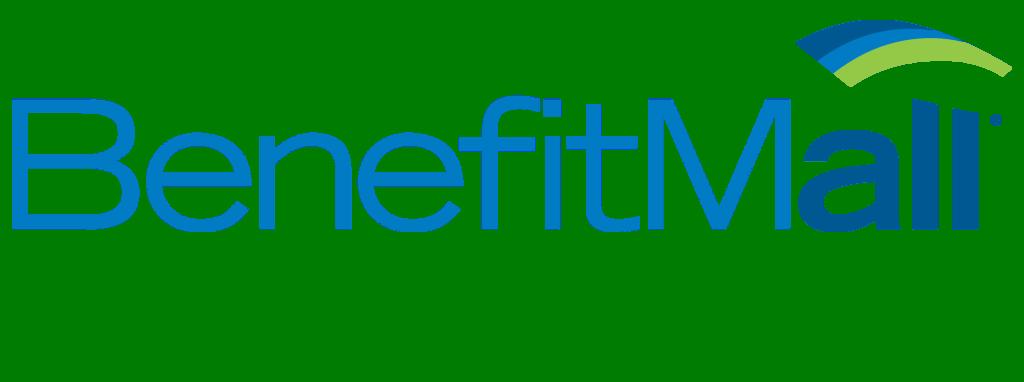
Bob Love assumed the overall leadership role of BenefitMall in 2024, ushering the company into it’s next chapter as part of the CRC Group. Since joining BenefitMall in June of 2018, Love has played a vital role in the company’s steady growth and numerous successes that have positioned BenefitMall at the top of its industry.
Love joined BenefitMall in 2018 as the President of the Benefits Division bringing with him more than 30 years of experience to the BenefitMall team. Before joining BenefitMall, Love oversaw Group Sales & Service and Group Distribution nationally for MetLife and Guardian. Most recently, he led renewed growth for Prudential National Accounts. In his role at Prudential, Love was instrumental in revitalizing the sales and service teams, restoring sales competitiveness, and ensuring the financial health of the group insurance segment.
MARCH 2024 CALIFORNIA BROKER | 25 CalBrokerMag.com

An Effective Way for Your Clients to Talk About You to Others
By Bill Cates CSP, CPAE President, Referral Coach International
ave you ever had a client ask you, “What should I tell others about you?”
And did you have a very simple answer for them; an answer that they would remember and that was effective enough to compel someone to want to meet you?
This is a perfect place to apply the concept of less is more. I was discussing this concept with a friend who is a business consultant. He took a sabbatical from work for a couple of years and has now jumped back into the game. As he was renewing his relationships with friends, colleagues, and former clients, he was pleased to learn that they all wanted to help him. And to do that, they needed to know the answers to a few very basic questions such as:
• Who do you want to meet?
• How will I recognize a good prospect for you?
• What are the problems or symptoms of problems you can alleviate?
• How can you help them?
26 | CALIFORNIA BROKER MARCH 2024 CalBrokerMag.com
PROFESSIONAL DEVELOPMENT
“I recommend you develop a way for your others to introduce you to quality prospects in as few as words as possible; in just one sentence if you can.”
• What should I say to folks about you?
• How do I spark their interest in meeting you?
Name Your Value in One Sentence
If you’re old enough, you’re probably familiar with the TV show Name That Tune, where contestants try to identify songs in as few as notes as possible. Contestants would say, “I can name that tune in 3 notes.” (This show first aired on radio in 1952 and moved to TV in 1954. It has since been revived at least four more times since then.)
I recommend you develop a way for your others to introduce you to quality prospects in as few as words as possible; in just one sentence if you can.
Keeping this to 1-sentence will benefit everyone in at least 3 ways:
1. The introducer will easily remember what to say about you to others.
2. The prospect will instantly get what you do and why they should meet you.
3. It will work in a text, an email, or a quick conversation.
Bill, do you have a simple formula to help me get started?
Yes, I do. I’m so glad you asked. It goes like this…
If you are _______ and you want to _______, you need to meet _______.
PART A: If you are – describes the ideal prosect.
PART B: You want to – identifies one or two benefits or goals.
PART C: You need to meet – endorses you.
At the risk of appearing self-serving, I’ll start with a few examples that I might use for my business. Then I’ll give you a few more examples designed to help spark your creativity.
Example #1
If you’re a financial professional and you want to acquire more ideal clients, you need to meet Bill Cates.
The Rule of 2 – Condensing your value prop into one sentence like this is not always an easy thing to do. The Rule of 2 allows you to use up to two types of prospects
and/or add a few more descriptors to Part A and/or Part B, but not Part C. Use your best judgement. Just do our best to keep the overall sentence concise and clear.
Example #2
If you’re a veteran financial professional wanting to acquire more of just the right type of clients, you need to meet Bill Cates.
Example #3
If you are a financial professional and you’re looking to leverage the power of a well-defined target market, you need to meet Bill Cates.
I could go on and on, but enough about me.
• Here are a few examples you can adopt and adapt to fit your situation.
If you’re approaching 65 and beginning to wonder about all of your options with Medicare, then you need to talk to Peter Smith.
If you love your family and don’t want to leave a financial mess behind when you leave this world, then you need to talk to Laura Jones.
If you’re a small business owner and want to make sure you and your business are protected from the inevitable financial surprises in life, you need to talk Jacob Miller.
As you can see, the possibilities are endless. Feel free to get creative and possibly have a little fun, however, never let your creativity and cleverness get in the way of clarity.
Now it’s our turn.
Why don’t you give it a try? Work with your team on this. Share your ideas with a few clients who love you and maybe have a bit of a marketing mindset. They’ll love helping you with this.
And feel free to send me an example of what you’ve created. I’d love to see how you apply this simple formula and will be happy to provide feedback, if you wish.


Bill Cates, CSP, CPAE, is the author of Get More Referrals Now, Beyond Referrals, and Radical Relevance. Bill’s newest book, The Language of Referrals, is scheduled for release in late March of 2024. Bill is a highly sought-after coach, consultant, international speaker, and virtual presenter. CalBroker Readers can get free (but valuable) tools here: www.ReferralCoach. com/resources. Bill can be reached directly at: BillCates@ReferralCoach.com.
MARCH 2024 CALIFORNIA BROKER | 27 CalBrokerMag.com
A B C

Life Insurance Settlements :
Who's Who?
By Lisa Rehburg
28 | CALIFORNIA BROKER MARCH 2024 CalBrokerMag.com LIFE SETTLEMENTS
Many people (including your clients) do not know that selling a life insurance policy is an option, and they let their policies lapse or they surrender them. In fact, 2.5 million seniors a year will walk away from their life insurance policies, with little or nothing. There is more and more advertising for life insurance settlements on TV, in print, on social media, and on the radio.
The visibility for the life settlements solution is improving, but who exactly is advertising?
A recent conversation with an insurance agent sparked questions about who the different entities are in life insurance settlements’ transactions, creating the suggestion for this article. So, who’s who?
The main players in the sale process are providers and brokers. Both entities are similar in that they will obtain medical records and illustrations from the insurance company, in order to obtain offers on a client’s policy. Both assist agents and clients with sale contracts, and pay commissions to licensed insurance agents. And, both are regulated by the Department of Insurance. But, that is where the similarities end. Providers and brokers have much different loyalties, and it is important to understand the difference.
real estate market, so agents and clients do not know if the offer made is a good offer or not.
This is not to paint the providers in a bad light at all. Providers are important purchasers of policies, and some of them are advertising on main-stream media, which is good. This helps raise visibility for life insurance settlements. Another positive of working with a provider directly, is that the client saves the life settlement broker commission.
FACT: 2.5 million seniors a year will walk away from their life insurance policies with little ornothing. Make sure your clients call you if they no longer need, no longer want or can no longerafford their life insurance policies.
*Life Settlements
life settlements broker is commission. Commission is shared with insurance agents, and is disclosed to the client in the sale contract on a separate broker disclosure form. Commissions are negotiable, but the guideline maximum commission a broker and agent can receive is 1/3 of what is obtained for the client, or 8% of the face value of the policy, so commission can be substantial. Commissions can be much less, depending upon what is appropriate and works for the client, but these are the maximums.
*Providers – providers are organizations that are approved by the Department of Insurance to purchase policies in a particular state. If a provider is not approved by the Department of Insurance in the state in which the client lives, the provider cannot make an offer and purchase a policy. Some providers have multiple funds behind them, and sometimes position themselves as giving clients and agents the highest offer, because they have multiple sources of capital. But, this is not the case – a provider is still one entity, even if they have multiple funds. They do not have a fiduciary duty to clients to make the highest offer.
When you and I are going to purchase an asset, say a car, we don’t walk into the dealership and announce that we want to pay the most amount of money for the car, right? We are trying to get a deal. So are the buyers. Unless they have competition from other providers, there is not much incentive to put their best foot forward and make the best offer. And, there are no “comps” with life insurance policies, like there are in the
Brokers – life settlements brokers are very similar to insurance brokers. As insurance brokers have access to many different insurance companies to offer their client the best policy for them, it is similar for life settlements brokers. They have access to many different providers, and importantly, have a fiduciary duty to clients to market their policy and obtain the highest offer possible in the life settlements marketplace. Brokers do this by introducing competition into the market, leveraging providers versus each other, which produces incentive for providers to continue to increase their offers. Only when the top offer is achieved, and all other providers have declined to increase their offer, is the broker’s policy marketing complete. In the sale contract, brokers disclose to clients the offers that were received, and from which providers, so the client can be assured the top offer has been achieved.
To emphasize this point, FINRA released a life settlement guide for consumers, “What You Should Know About Life Settlements” in July. In this guide, they emphasize: “If you’re approached by someone soliciting you to sell your life insurance policy, understand that person’s role in the transaction: Are they a life settlement broker who represents you, or are they affiliated with a particular life settlement company? If the answer is the latter, the person might only obtain an offer from that company, making it hard for you to know whether you’re being offered a competitive price.”
Brokers typically work with the providers that are advertising in the media, as well as others that do not advertise. Some providers prefer to rely on brokers to send them policies to review, and save the advertising dollars. Sound familiar? Some insurance companies rely solely on brokers like you, instead of advertising directly to consumers.
The downside to working with a
CalBrokerMag.com
*Marketing Companies – marketing companies are increasingly appearing. They email agents or advertise on the internet. They are simply lead generators that sell the leads they obtain from their marketing. Some have multiple websites and different names. It can be confusing to know if the website you are on, or the number you call, is a marketing company or not. A clue that a website is a marketing company is usually in the small print on the bottom of the website. It will usually say that the entity is neither a provider nor a broker, and any interest generated will be passed on to licensed organizations.
There is not one entity that is “good”, nor one that is “bad”. It is personal preference in how you and your client prefer to sell their policy. And, nothing says that you cannot contact a provider and a broker to see who does the best job for you and your client.
The bottom line is to know who you are working with, where their loyalties lie, and what the positive and negative aspects are of working with that entity. Be sure they are properly licensed. Contact them, talk with them, and see what makes you and your client the most comfortable.
With providers advertising on TV, radio, in print and on the internet, make sure your clients call you if they no longer need, no longer want or can no longer afford their life insurance policies. Letting your clients know their options not only serves them, but also serves you and your business.
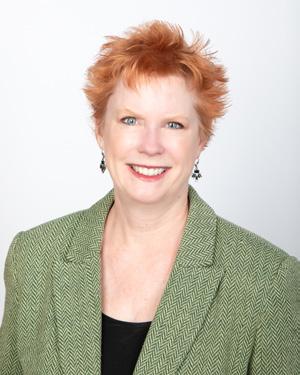
714-349-7981
LISA REHBURG is president of Rehburg Life Settlements, a life insurance settlements broker. Rehburg has been working with brokers in the health and life insurance industries for over 30 years.
lrehburg@aol.com
www.rehburglifesettlements.com
Lisa is a collaborative partner with Cal Broker and can be accessed via healthbrokercollaborators.com
MARCH 2024 CALIFORNIA BROKER | 29
A Case Study: Employer Funding Can Be Bridge to Additional Coverage
By Marc Glickman FSA, CLTC
Last month, we shared a group LTCi enrollment for a large employer with over 20,000 employees.
This month, I wanted to share a story that hits us close to home. One of the benefit brokers in our community was interested in offering LTCi to a long-time client of his. The client’s company provides care management services to children with serious behavioral health, substance abuse, or developmental issues and their families.
Most of their employees are social workers with an average age of 33 and are predominantly female. They are a growing company but have challenges retaining high-quality employees because of the nature of the job. Anything that they could do to attract and retain these employees, but on a limited budget, was highly desirable.
BuddyIns helped the broker propose a solution that resonated with their younger employees, and it was friendly on the budget at the same time.
Key Ingredients: Employer Funding Wins the Day
We initially showed them a guaranteed issue (no health underwriting) plan if they carved out a group of 50+ key managers and directors that only cost $3,000 per month for the entire group! In addition, they could offer a voluntary buy-up option for guaranteed issue at higher coverage levels and could get the employees’ spouses simplified issue coverage.
The employer did us one better. They were so impressed with the affordable price of the plan, they asked us if we could run a plan for all 200 employees. It turns out that the plan was only $6,500 per month total (because of the younger ages) and because the carrier gave us a better rate class given that the participation would be 100%. The employer decided to offer the basic plan for everyone and a carve out higher level of coverage for the managers and directors.
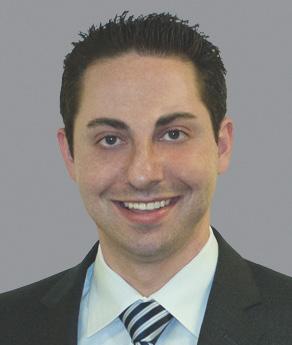
Make 2024 the year to connect with a SME to learn more and
Contact:
The Collaboration Center
Info@healthbrokercollaborators.com (714) 497-3312
www.buddyins.com/calbroker
Results
The employer showed their commitment to their caregiving employees by helping provide future funding for their own care needs.
For group LTCi, a little bit of funding can go a long way. Now that employees own the coverage, they have committed to learning about LTCi planning and the value of the product. This equips them with the knowledge to further protect their financial future and gives BuddyIns the opportunity to continue to educate them on the cost of care and their options to purchase additional coverage.
For more information on group/worksite sales, BuddyIns offers a weekly Worksite Solutions Study Group. https://www.addevent.com/ event/vs19612672
California Broker is pleased to have a collaborative partner in BuddyIns. Buddyins.com gives our subscribers the opportunity to decide how to provide LTCi to their clients. Subscribers can learn the LTCi business, get the proper appointments and product training from the many carriers or they can partner with an expert like BuddyIns.com and connect their client with a LTCi expert. Subscribers fall into one or the other path. Many decide to collaborate with experts in LTCi, Life insurance, or annuities by bringing their clients into a meeting with the expert. The funnel below will lead you to a collaborative partner matching process. Provide your client’s issues and any information you think will help. You will then be contacted by our Collaboration Team. We look forward to helping you and your client find the best planning solutions.
30 | CALIFORNIA BROKER MARCH 2024 CalBrokerMag.com LONG-TERM CARE
Glickman, FSA, CLTC, is CEO and co-founder of BuddyIns, a leading long-term care and hybrid insurance technology company Marc is also an actuary and has served as chief sales officer for a major LTC insurance company. Marc@buddyins.com
Marc
818-264-5464
Center to explore what is available to help you with your client’s long-term care
Email or call to speak with a subject matter expert SME, to review your client’s
next steps.
Reach our to the Collaboration
insurance, or other planning issues.
issues and collaborate to discover suggested
income.
grow you
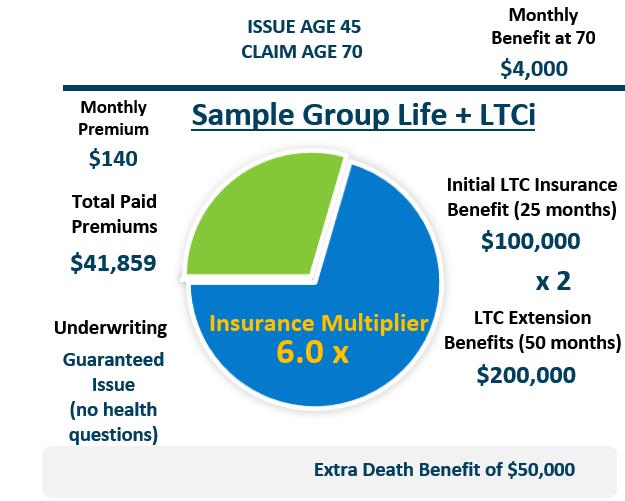

Find Client Solutions and Earn Additional Income
Contact Health Broker Collaborators to gain insights and a no obligation review of your client’s tax, financial, and legal issues. SME's can help in planning and closing insurances cases.
Speak with broker friendly Subject Matter Experts
Collaborate to find solutions that cause insurance to be sold and you share in the success
Enjoy working with professionals who collaborate with you to resolve client planning needs
REASONS TO CALL our SMEs:
When your client needs help outside of your area of expertise:
Tax and retirement income concerns about running out of money in retirement; Legal concerns such as estate planning, so their tax concerns are addressed; and Business Owner succession planning needs are professionally managed.
SUCCESSFUL HEALTH INSURANCE
PROFESSIONALS APPRECIATE WORKING WITH SMEs.
CALL: 714-497-3312
EMAIL: info@healthbrokercollaborators.com

MARCH 2024 CALIFORNIA BROKER | 31
COLLABORATE WITH SUBJECT MATTER EXPERTS(SMEs)
Reasons To Acquire Books of Business
By Phil Calhoun and David Ethington

This article provides health insurance professionals fresh ideas and new ways to grow your book of business. This is the question you need to consider:
Why would a successful broker consider acquiring a book of business?
When you look at the trends it becomes clear there is a significant opportunity for younger brokers to grow their book of business while helping older brokers protect their hard earned commissions and then retire with their commissions safe and with a fair payout in retirement.
Our planning process includes all of the tools needed to help active brokers protect their commissions. We also cover how to acquire commissions when brokers are ready to retire.
TRENDS:
75% of all current health insurance professionals are Baby Boomers.
In California, there are about 130,000 licensed life and health insurance professionals, so roughly 97,000 are Baby Boomers.
Over the next 10 to 15 years most Baby Boomers will retire. The youngest Boomers are 60 and the oldest are 80.
This means approximately 97,000 who own a book of business will retire. How brokers will choose to retire is unknown.
Within the next 15 years, hundreds of brokers will either sell their book of business, give their book to someone licensed (employer or a colleague), or they will pass away while active and the carriers keep their hard earned commissions. This last option is avoidable.
FACT — ALL Active Brokers need to have a plan in place to protect their hard-earned commissions.
Why Would YOU not want to help solve this problem?
Consider These Case Examples
After years of helping brokers as their successor or Buyer, we began matching brokers with other brokers to fill these roles. Some brokers may want to sell while others will want to buy. Brokers who want to stay active need help to protect their commissions.
Sellers:
• Sue is 81 and has a Medicare book of business with IFP as well.
• Rob is 77 and has a Group book of business.
Buyers:
• Tim wants to grow his book of business in IFP and build his group and Medicare book as well.
• Linda wants to acquire group business.
We matched Rob and Linda as Active Broker and Successor. Linda completed our training program and has become a subject matter expert in Commission Solutions. Our training provided all the tools required to be a Successor and complete the Commission Protection agreement. Linda received our recognition as being proficient in Commission Protection as a Successor Broker. The training enabled Linda to introduce the idea to Rob and explain how she could help him protect his commissions. Linda then arranged a meeting with our team to go over more details on the options to protect commissions, and then move to a review the key components of the Commission Protection agreement. The next step included a review of the agreement page by page as we reviewed and completed the key deal points. After the agreement review was completed and both parties had all their questions covered, Rob was given the option to get input from his advisor. Once ready to sign we did a final review and used DocuSign to execute the agreement. We then moved to complete the carrier
32 | CALIFORNIA BROKER MARCH 2024 CalBrokerMag.com
COMMISSIONS SOLUTIONS
forms required for the future transfer of commissions once the Active Broker decides to retire. Then we calendared a time to do an annual update of the carrier’s forms. Finally, we guided the process to prepare for the client relationship transfer which is a key process leading to retention of both clients and commissions. With the plan in place, we toasted the deal and know that Rob as an Active Broker now has Linda his Successor, and the risk of total commission loss is eliminated. For the comprehensive work, including all three of the steps above, our consulting fee is $3,000. For the annual updates the fee is $500. Rob agreed to pay the consulting fee and Linda agreed to pay the annual fee. Their planning process ended successfully with Linda looking forward to acquiring Rob’s book of business in a few years. Rob is pleased to have Linda protecting his book while he continues to work for a few more years.
Sue and Tim met through our connection. Sue was looking for a Buyer of her book and contacted us via our marketing webinars offered to life and health insurance professionals. Tim completed our How to Acquire Books of Business training program and was actively looking to acquire IFP and Medicare books. Sue was ready to sell her IFP and we provided the consulting work for the purchase of Sue’s IFP book of business. Tim paid the fee for our connection and consulting work which included the purchase agreement, the transfer of commissions process with all of the carriers, and the client transition plan. Then Tim offered and Sue accepted Tim as her Successor for her Medicare book of business. We provided the agreement used to establish Tim as Sue’s Successor. We included the commission transfer planning work and the client relationship transfer process. Sue paid our fee for the Commission Protection agreement, and Tim agreed to pay the annual fee for updating the carrier transfer forms.
Here’s How This Process Produces Results:
1. Twenty-five percent of the Active Brokers we speak with decide to Sell within 3 months.
2. Twenty-five percent of the Active Brokers decide to Sell some of their commissions but keep some lines of insurance.
3. Twenty-five percent Retire within 5 years of signing a Commission Protection agreement.
4. Twenty-five percent Stay Active and some of them decide to Sell to another broker — You Keep the refundable Fees!
Interested in Our training — How to Acquire Books of Business
Join us on a webinar to learn more about becoming a subject matter expert in commission solutions. We cover all you need to know in Part A and Part B of this course.
How can a health insurance professional become a capable option for another broker?
The key to be an expert in Acquiring and Protecting health commissions, is to learn how the process works. In our course, “How to Acquire Books of Business” we cover all of the critical steps from finding the right brokers to work with to closing the deal.
After completing our 4-hour course titled, “How to Acquire Books of Business” you will receive our “Commission Solutions Proficiency Rating “.
This course is for serious candidates to learn more and take the time to become a Subject Matter Expert on Commission Solutions.
Part A: How to Purchase Commissions
1. Grow your book of business affordably;
2. Add new clients and revenue;
3. Help another broker to sell their commissions;
4. Use a proven process to acquire health commissions; and
5. Save time and money marketing for leads the traditional way.
Part B: How to Protect Commissions as a Successor Attendees will learn:
1. How to find ideal Broker Successor candidates,
2. The criteria you need to meet so you can protect an Active Broker’s commissions.
3. Tools to use to understand how an Active Broker Evaluates and Selects their Ideal Successor, including a Critical Analysis Process.
4. List of steps involved in working with another health insurance professional. From explaining how you help Active Brokers protect their commissions to the completion of a final Commission Protection agreement.
5. How to complete the Purchase and Buyout process in the Commissions Protection Plan.
6. How to explain the ideal payout options to win you more Successor opportunities.
Learn the importance of working with a subject matter expert at protecting commissions and how to use a proven process that will build your future revenues.
To learn more about How to Acquire Books of Business get on the wait list for the next training email phil@commission.solutions Cost for the Four Hour Course is $950.
Questions Schedule a 15 Minute Call
Reach a Subject Matter Expert in Commission Planning

Phil Calhoun MBA is a board member of the Exit Planning Institute Orange County Chapter. He owns Integrity Advisors.
Integrity Advisors is a health insurance agency that specializes in educating health brokers on the importance of commission protection. Commission Solutions is a program offered by Integrity Advisors.
Phil’s Calendly Click Here
Phil@commission.solutions 714-664-0311
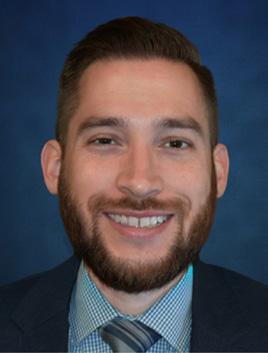
David Ethington is VP of the Medicare Division and director of Broker Relations with Commission Solutions, part of Integrity Advisors. David is an expert in the process to acquire and transfer health commissions. He has trained numerous brokers in commission education and he built the commission transfer planning module for Medicare commissions which is provided to our broker colleagues. His work has excelled due to his commitment to providing the best service to both health clients and health brokers. David respects the hard work it takes to build a book of business and enjoys working with retiring brokers and their families. He serves as the CAHIP-Orange County VP of Membership. David has participated in the commission protection process for seven years. He’s also involved in acquisitions, especially in the broker relationship transfer of commissions. David lives in Orange County with his wife and their cats. He is an avid runner and completes several long-distance events annually.
David’s Calendly Click Here
david@commission.solutions 714-664-0605
MARCH 2024 CALIFORNIA BROKER | 33
CalBrokerMag.com
2024 Prescription Drug Update for Assisting Your Clients With Prescription Drug Coverage
The start of the new year in 2024 is bringing many changes to prescription coverage for those Medicare beneficiaries covered under either Medicare Advantage Prescription Drug Plans (MAPD), Medicare Advantage PPO plans and Stand-Alone prescription drug plans. I thought it would be timely to update this article for the new year!
For Medicare beneficiaries 2024 promises to offer the good, the bad and the ugly. Many of the stand-alone prescription drug plans have substantially increased their monthly premiums while a few reduced the premiums. For prescription drug coverage the standard annual deductible was increased to $545 with the coverage gap increasing to $8,000. (An increase of 7.5%). The good news is the end of any cost sharing during the catastrophic stage with the reduction to $0!
BY MARGARET STEDT, LPRT, CSA

Plans continued to offer specific insulins at the maximum amount of $35 with many plans offering a lower copay. This cap was included in the Inflation Reduction Act of 2022. The insulins on the reduced cost list were expanded for 2024. A number of Medicare Advantage plans also are offering a number of brand drugs at a specialty tier with a reduced copay until the beneficiary reaches the coverage gap.
Hundreds of drugs are increasing in costs, like Ozempic, Eliquis and Mounjaro. Some
plans are restricting a number of the drugs to specific diagnosis.
When working with clients, make sure to secure the Scope of Appointment and ask if they would like to have your assistance in their review of their prescriptions. In the Medicare Advantage sale this is a key consideration in addition to the physicians and other providers. Make sure that the list includes the name of the drug, the dosage and the frequency. Be firm in securing the
right names and dosages. Ask if the client must take or prefers taking Brand name drugs or takes the generic version. Also, you will need the name of their pharmacy(ies) as they may secure their drugs from several.
Review the different coverage phases of the prescription drug program (Initial, Gap and Catastrophic) and if there is a deductible for the plan, explain how it is applied and how coverage works through phases. The misunderstanding of when the deductible applies is one of the biggest complaints by beneficiaries at the beginning of the year. Many think that their drug is not covered because of the application of the deductible!
When using the quoting platforms confirm that you have the right zip code, the correct input of the drugs with the name, dosage and frequency. The quoting platforms allow you to input several pharmacies that can be helpful when comparing plans. If the client has a very expensive drug (especially at the Non-preferred brand tier), you should make a habit of checking the proposed plan’s formulary to see if the drug is being shown correctly.
In reviewing the quotations with the client, make sure you cover the tiers and if there are special requirements such as step therapy, quantity limits and preauthorization. When reviewing the progression of the prescription drugs purchase through the year
34 | CALIFORNIA BROKER MARCH 2024 CalBrokerMag.com
MEDICARE
point out to the client that this is only an illustration as the actual costs due to moving through the initial, gap and catastrophic phases of drug coverage depends on their actual usage and purchase at the pharmacies input in the calculation. Always mention that drug formularies may change during the year and the price of the drugs may also.
In addition, review if they have a new drug prescribed during the year or if there are other changes, and inform them that you are always available to assist with the review of the formulary. Also explain how the appeals process works for any drugs that are not on their formulary or they need a tier reduction consideration due to the cost of the drug.
Clients should have a copy or know how to access the formulary for their chosen plan. Explain to them that is their responsibility to let their physician know if their drug is covered under their plan. Doctors cannot know every plan’s formulary for each client.
may have a copayment. Remind the veteran that the VA physician must write the prescription script for VA covered medications. Medicare and the VA do not coordinate benefits.
The State of California, under the California Senate Bill 393 in the year 2000 also offers a prescription drug program for Medicare Recipients as well. Medicare beneficiaries may call the Medi-Cal help line at 1-800541-5555.
Many drug companies offer financial assistance with copays or may even provide the drugs for free depending on the beneficiaries being able to meet the income criteria.
There are a number of ways for the beneficiaries to reduce their costs. The use of generics is usually the most cost effective. They should work with their physician and pharmacist in reviewing other medication alternatives. They also need to pay attention as to whether their pharmacy is preferred or standard under their plan. Also , for some plans this year a 90-day supply may be less at the pharmacy rather than through mail-order!
The prescription drug discount programs are continuing to grow. They offer individuals viable cost alternatives. However, some may not offer discounts if the individual is on Medicare. The beneficiary should review the various offerings. Some beneficiaries even find it more cost effective to pay the cash discounted price at the pharmacy.
Here are some programs you may want to explore: GoodRx, RXsaver, OptiumPerks, America’s Pharmacy, WellRX, Save on my meds, Internet Drug Coupon, gogomeds, SingleCare, and NEEDYMeds. Pharmacies may have special programs as well. Note that many of these plans are targeting generic drugs. Be careful as some of the programs will provide the users information to the on-line quoting agencies for drug and MAPD plans as the client gives permission by using the platform. Forewarn your clients that this is a possibility.
Some seniors will ask about trying Canada for their prescriptions. It is important to note that under Federal law, drug importation is only allowed under limited circumstances.
Many drug companies offer financial assistance with copays or may even provide the drugs for free depending on the beneficiaries being able to meet the income criteria. Access the manufacturers’ websites for expensive drugs by exploring patient assistance programs. Again, some may not be available to those who are under a Medicare plan with prescription drug benefits.
If you have clients that are eligible for VA coverage, they may want to explore their options. The U.S. Department of Veterans Affairs provides both healthcare and drug benefits for eligible military veterans. For some veterans if their illness is connected to their service their cost may be $0, for other eligible veterans, they
If you do not choose to quote the prescription drug plans, please make sure to educate your client on the phases of coverage, how to understand the quoting information, what the star ratings mean and other key information such as when they may change plans. I would think very carefully about running the quotations for these clients and making any recommendations for plans as your Errors and Omissions Coverage may not cover you for plans that you are not the agent of record on!
For those agents who choose to provide the full service of prescription of drug review and plan enrollment, as long as you are selling compliantly and are thorough in your research and counseling, you should be well rewarded with a happy client and an ongoing relationship.
Just a reminder, make sure that you are recording your calls, documenting your conversations, and are touching base with your clients during the year. You are a servicing agent as opposed to the call center agents as you are the agent of record, and you are there to provide on-going service and support. You truly can and do make a difference for your clients!
Finally, please note that there will be substantial changes to prescription drug coverages in 2025. We will address these when the information and options become available so you can be prepared for AEP this year!

MAGGIE STEDT C.S.A, LPRT, is an independent contractor/licensed agent and consultant. She is a certified senior advisor and lifetime member of NAHU’s Leading Producers Roundtable at the Soaring Eagle Level. She has over 40 years of experience in essential areas of the insurance industry including sales and sales management, product development and product management. A dedicated leader, Maggie currently serves on the NAHU Medicare Advisory Committee. Founder of the annual Senior Medicare Summit, attendance grew from 200 in 2010 to close to 1,000 attendees in 2022. She served as past president of CAHIP; NAHU Region 8 Membership Chair 2014 – 2018 and past president of OCAHU, serving two terms.
maggiestedt@gmail.com
CalBrokerMag.com
MARCH 2024 CALIFORNIA BROKER | 35

Don’t Let Your Clients be a Victim of Identity Theft
BY RAYMOND T. MARTIN
You’re probably well aware of identity theft as a growing problem. It’s in the newspapers, magazines and on TV. But have you heard of medical identity theft? Perhaps not.
Traditional ID theft involves hijacking your identity to buy things – lots of stuff. It will ruin your credit and turn your life upside down. Well, medical ID theft can deliver the double whammy of ruining your credit and potentially harming your health!
What is Medical Identity theft? It is when someone uses your identity to obtain treatment, goods or drugs.
They may also use your social security number and/or health insurance benefits. Imagine these horrors:
• You’re given the wrong blood type at the hospital because someone posing as you, who has a different blood type, received treatment there.
• Your claim for appendicitis is denied because someone pretending to be you already had it removed.
• Your application for life or health insurance is declined citing an illness you’ve never had.
That is why you should at least be aware of this type of ID theft.
How does it happen?
The problems with your medical records could be entirely noncriminal: a filing or data entry error or a case of mistaken identity of two patients with similar names.
But crooks do steal medical identities to obtain goods, drugs or treatment. The goods and drugs can be sold for cash. Your ID can even be sold to someone needing major medical treatment.
But the fact is, anyone with knowledge of the system and your insurance card can file false claims for treatment never delivered to reap hundreds of thousands of dollars. (Crooks acting alone or organized crime rings.)
Health care workers and administrators have the greatest opportunity for this type of theft. It is a helping profession although bad guys are in every segment of society. But an ordinary crook “dumpster diving” can find a discarded insurance card and enough information to use it.
In particular, senior citizens on Medicare and Medicaid recipients are targeted.
36 | CALIFORNIA BROKER MARCH 2024 CalBrokerMag.com
MEDICARE
Corrective Action
If your medical ID is stolen, what can you do?
1. Your first priority should be to correct records that affect treatment.
2. The second priority should be to fix records that would hinder claims payments.
3. Do not forget to file a police report as soon as you become aware of the situation.
Because of HIPAA laws, you have these rights to your medical records:
• To access
• To ask for amendment
• To get an accounting of disclosure
Those are more rights than you had before the passage of the law but, if you become a victim, you may find the provisions woefully inadequate for solving the problem. Let’s explore them briefly.
Access
You may view your medical records for free and copy them for a fee. Very few records are off limits to you, things like notes of a therapist or from a clinical trial. If you request your records, a provider must respond within 30 days.
Amendment
To correct the problem, you must make a written request. The letter should state what you think is incorrect, why, what is the correct information, and ask to have the file amended.
This creates complex problems. A doctor or hospital does not have to remove fraudulent records! They are only required to notate your disagreement and pass it on if the records are shared.
Why would they NOT remove medical records of someone else?
Because if they acted upon incorrect information and it impacted your health, it explains their actions, so those false records are explanation of their decision. If you cannot get the wrong information removed, at least try to negotiate a separate file correctly noted as an unknown person posing as you. If the treatment given to the perpetrator did not impact you, then you have your greatest chance of having the information deleted from your file.
Disclosure
A record of disclosure will help you follow the paper trail to know who else has received the false medical records. That means more places to access and amend.
That’s more work and frustration but at least you know where to look.
In many ways, medical identity theft is far more difficult to solve than financial identity theft. There are only three credit bureaus to fix but hundreds of thousands of medical providers, hundreds of whom may hold false information about you.
And while you are correcting your medical history you may also be battling the financial side of the coin – collection agencies, insurance claims AND the credit
bureaus.
Preventative Actions
The old saying is true, “An ounce of prevention is worth a pound of cure.”
• Guard your medical identity, the same as you should do to protect yourself against financial ID theft.
• Treat your insurance card like a credit card with a million-dollar limit. Don’t lose it, loan it out, or leave it unattended. Shred old cards instead of throwing them away.
• Pay attention to every claim form the insurance company sends. Make sure you actually received the services listed.
• If you get a bill for medical services you didn’t receive, investigate quickly.
• When a medical provider asks for picture ID, don’t complain, be comforted. If ID were required every time you received care, this crime would be half licked!
Correct medical data about you is vital for your correct medical treatment. It would also affect qualifying for life insurance should you want to apply. Safeguard your medical identity! And call me if you have questions about the Medicare maze of options. I create retirement income and financial confidence. That’s what I do.

Raymond T. Martin is founder and president of Martin & Associates Insurance Services, Inc. Ray’s company has specialized in Medicare insurance for over 25 years serving Southern California retirees.
Ray holds a bachelor’s degree in business management from Pepperdine University (1990) and is the author of the best-selling book “The Nuts and Bolts of Original Medicare, Medicare Supplement Insurance and Medicare Advantage.”
In 2008, Ray founded Martin Wealth Management, LLC, as he saw the need for sound financial education to help the retirement community. MWM focuses on coaching clients instead of selling investment products. Clients learn how to invest and manage their money during retirement effectively and prudently.
Ray’s latest book is ‘Stress-Free Retirement, 8 Secrets to Secure your Money and Peace of Mind’.
ray@WeRetireSmart.com 800-464-4941 www.ask4medicare.com
MARCH 2024 CALIFORNIA BROKER | 37 CalBrokerMag.com
PROFESSIONAL DEVELOPMENT
BY NELSON GRISWOLD
In2024, traditional health brokers are under siege from four trends that the Affordable Care Act and the 2021 Consolidated Appropriations Act either unintentionally launched or accelerated. These trends are upending both the traditional broker role and employer-sponsored health plans:
1. Transactional brokers are becoming consultative advisers;
2. These advisers are moving up from HR to work with executives in the C-Suite;
3. Advisers are replacing fully insured plans with self-funded plans; and
4. They are using cost-containment strategies to lower healthcare costs.
Brokers who accept these trends and transform themselves and their practice gain a substantial competitive advantage against statusquo brokers…thus, the inarguable threat that these trends pose to those who hang on to the traditional role.
Part 1 of this article examined brokers who are making the move from their transactional broker role to a consultative adviser role.
Part 2 assessed how these consultative advisers are elevating from HR to work with the CEO and CFO in the company’s C-Suite and their key role in the broader trend toward self-funding of the health plan.
Most of these consultative advisers who are selling self-funding in the C-Suite are also leveraging the promise of healthcare costcontainment, the final trend.
Managing Health Care Costs
The Catalysts: The 2021 Consolidated Appropriations Act (CAA) and Unsustainable Premium Increases.
In addition to addressing employers’ fiduciary duties toward their employer-sponsored health plan, the Consolidated Appropriations Act also mandates cost transparency for insurance companies, hospitals, and self-funded health plans. These CAA requirements are designed to provide greater insight into healthcare costs for both employers and employees.
Savvy C-Suite executives, who ruthlessly manage every other cost in their company, are already frustrated that they can’t control their healthcare spend. Added to their rising concern for out-of-control healthcare costs, this new regulatory focus on cost transparency is
galvanizing increasing numbers of CEOs and CFOs to search for ways to manage their healthcare spend, making them much more open to a cost-containment conversation.
The Trend: Using Healthcare Cost-Containment Strategies
Leveraging the control afforded by a self-funded plan administered by an independent TPA, consultative advisers are helping executives manage their healthcare supply chain–the healthcare that their employees purchase–to control both the quality and cost of care.
It’s important to note that almost all cost-containment is a nonstarter when a health insurance company is involved…whether providing a fully insured plan or in a self-funded administrative services only (ASO) arrangement.
Just like consultative selling, working the C-Suite, and selffunding, healthcare supply chain management is a skill that brokers can learn. Managing the quality and cost of healthcare requires an adviser to use the plan’s quality and cost levers, and then selecting the right solution partners to ensure the right outcome.
Operate the Quality & Cost Levers
There are a wide range of levers that advisers can work to improve the quality of care and to reduce costs including;
• Engaging a fiduciary and fully disclosed pharmacy benefit manager (PBM);
• Implementing an effective specialty drug cost mitigation program;
• Applying provider direct contracts or reference-based pricing (RBP) to address out-of-line provider prices, especially from hospitals;
• Using an ambulatory surgery center (ASC) instead of a hospital operating room (OR) when possible, which both improves outcomes (lower infection rates) and reduces costs (ASCs typically cost 45-60% less than an OR);
• Incentivizing the use of telehealth virtual care providers, e.g., physicians and behavioral health counselors; and
• Steering employees to high-quality physicians, which improves outcomes while almost always lowering costs, due to factors including fewer complications and readmissions.
38 | CALIFORNIA BROKER MARCH 2024 CalBrokerMag.com
PART THREE
The right cost-containment strategies can earn premium decrements from certain stop-loss carriers, lowering the employer’s fixed costs. But a decrement from the carrier depends on more than the plan deploying a recognized strategy.
Vetting Solution Providers
Because almost all cost-containment strategies requires a solution provider to execute the strategy, not just receiving a stop-loss decrement, the very success of your health plan is dependent on engaging vendors that can be counted on to deliver the quality care and/or the expected cost savings.
Not all solution providers are created equal. Since your solution providers will be doing the heavy lifting in the health plan to control quality and cost, your plan’s success relies on your solution providers doing their job well.
Advisers must vet solution providers to ensure they will deliver the expected result. Smart advisers identify solution partners that they can rely on.
Selecting the right solution partners is one of your most critical decisions. Key is knowing the questions to ask when vetting providers and having peers who will share their vendor experiences.
Advisers managing the healthcare supply chain with the right cost-containment strategies executed by dependable solution providers can improve the quality of care and reduce costs by $2,000 or more per employee – in Year One alone. What traditional broker delivering the annual renewal increase can compete with an adviser who delivers actual cost savings like that?
The Result
all out-of-pocket costs – no deductible or co-insurance, i.e., free healthcare – for patients who choose treatment at that hospital. Their plans can waive out-of-pocket costs because of the plan sponsors’ huge savings when patients utilize the hospital direct contract. They since have built a regional network, having established direct contracts with hospitals in Cape Girardeau, Mo; Memphis, TN; and St. Louis, Mo.
64% Growth in Six Months
The savings from the hospital direct contract made their selffunded plans so attractive to area employers, their small, thirdgeneration agency in rural Missouri won a 500-life manufacturing plant from a top-three national broker. Their successful costcontainment strategies allowed Johnson and Lape to grow their book of business 64 percent in just six months.
Johnson and Lape and Mike Hill have discovered that delivering lower healthcare costs provides a huge competitive advantage. How can traditional brokers protect their book from the growing number of advisers who are managing the cost of healthcare?
While not evenly distributed across all markets, these four trends already are changing our industry dynamic and disrupting the traditional broker role.
Elite advisers in California and across the country are using cost-containment and healthcare supply chain management to give business owners and executives control over their healthcare spend. The result for employers is higher quality care and lower costs. The result for advisers is growth of their book.
Mike Hill, Total Control Health Plans
Consultative adviser Mike Hill, founder of Total Control Health Plans in Grand Rapids, MI, and a 2021 Broker of the Year Finalist, six years ago was forced to rebuild his benefits agency from the ground up. He made the decision to reinvent himself, elevate his practice to the C-Suite, and embrace the consultative model, self-funding, and healthcare supply chain management.
Like Dan LaBroad, Hill’s work with the C-Suite also landed him and his CEO client, Jim Eickhoff, President and CEO at Creative Dining Services, in the pages of Chief Executive magazine. By working with Hill, Eickhoff said, “we really figured out we could put together a program and manage it like we do in any other business line that we have in our company.” In the first year of the plan, Hill’s cost-containment strategies saved Creative Dining over $500,000.
From Zero to $1,000,000 Book in Five Years
Hill’s success didn’t stop with this one client. His commitment to managing the healthcare supply chain helped Hill build a milliondollar book of business in less than five years…from scratch.
In Missouri, consultative advisers Beth Johnson and Deke Lape, partners at Mitchell Insurance in Sikeston, created a direct contract with a local hospital, negotiating rates based on a percentage of Medicare. Making that hospital an optional service tier in the selffunded plans they designed, Johnson and Lape are able to waive
The Future is Here
“The future is already here – it’s just not very evenly distributed,” William Gibson famously observed.
Each of these four trends represents a major advance for the industry. Consultative selling elevates the adviser and provides greater value to the client. Selling into the C-Suite addresses the strategic and financial aspects of the healthcare spend and empowers CEOs and CFOs finally to take control of their spend. Self-funding gives employers the opportunity to control the cost of healthcare.
Finally, healthcare supply chain management and cost-containment strategies allow employers to manage the quality and cost of care.
While not evenly distributed across all markets, these four trends already are changing our industry dynamic and disrupting the traditional broker role. If a broker in California has yet to go up against a consultative adviser or compete with an adviser working in the client’s C-Suite… it won’t be long. If she has not lost a group yet to an adviser bringing a self-funded plan or implementing costcontainment strategies… it’s coming.
Brokers who embrace these trends can expect a strong competitive advantage in the marketplace. Brokers who cling to the traditional role will be like the ostrich with his head buried in the sand, blissfully unaware of the threat, but thoroughly exposed.
These four trends are inexorably transforming the industry for the better. While not every broker will choose to embrace the future, those who do will be advancing the industry…and their own career. The future belongs to the brokers who embrace these four trends.
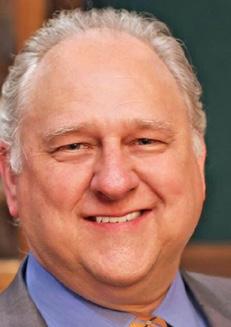
Nelson Griswold is the visionary leader of NextGen Benefits, the award-winning organization that is disrupting the industry by training brokers to become consultative advisers to company C-Suites and to take those companies self-funded to manage the quality and cost of healthcare. Nelson@insurancebottomline.com
MARCH 2024 CALIFORNIA BROKER | 39 CalBrokerMag.com
NextGenBenefits.com
Our California Broker monthly CALL where we focus on Client Success Stories was held February 7th
No Boasting — No Gloating—Just
the Facts
Sharing Stories of Success with Solving Client ISSUES
By Carmen Ponce
On a recent Client Success Stories call, attended by 40 California Broker subscribers, Carmen Ponce went over three situations where clients had issues with accessing care using their health benefits. Carmen shared some very timely information on Timely Access to Care CA Law, Carrier Network Adequacy, and Single Case Agreements.
She explained the goal of the Client Success Stories Call is to help everyone’s knowledge of what worked to resolve client issues so that attendees can learn from these examples and eventually help resolve more client issues.
We recorded the call, and the link was shared with the over 1,000 people who responded they wanted this information but were not able to join the live call. The link is below for all subscribers of California Broker to enjoy.
Carmen emphasized the importance and value of lifelong learning. “In the insurance business, we know happy clients lead to retention of clients.” stated Carmen.
Carmen then introduced some basic facts: Health insurance professionals are in the business of solving client issues. Most of the effort after the insurance sale is focused on servicing clients. In this process you become a trusted advisor. And you win as you continue to be paid when you retain your clients.
She emphasized how solving issues is both using your knowledge and experience combined with reaching out to collaborative partners who can help enhance the work to solve the client’s issue.
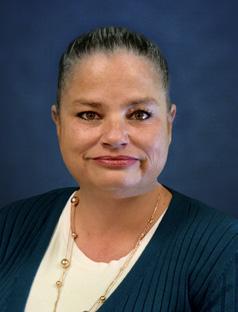
With her 18 years’ experience as a health insurance professional, Carmen has both the passion to help clients navigate the often confusing health care industry and the experience to find solutions for clients who reach a point of confusion and frustration. In her work with health care providers and insurance carriers, she explained, "Far too often our clients are left in new and difficult situations where they cannot get the result they desire without help."
In summary, the client success stories Carmen covered shows how client retention and service work go hand in hand and how the process of solving an issue for a client begins with identifying the client’s real issue.
Carmen shared about Timely Access to Care CA Law at: https://bit. ly/3TgYQ59
Then she covered Health Insurance Network Adequacy Requirements at: https://bit.ly/3uX5vIn
Finally she covered Single Case Agreements and how to obtain an approval at: https://bit.ly/3Iir5dx
Next month Carmen will cover more Client Success Stories so please consider joining. We will record these Client Success Stories calls should you not be able to attend the live call.
Carmen Ponce has over 18 years of experience as a health insurance broker/advocate. Her passion is helping her clients navigate the tumultuous health insurance sector. Her professional focus is on advocating for clients at every need, from wrestling with a health insurance carrier or educating a doctor’s office staff about coverage or an employer about compliance, her aim is targeted on her client's needs which are always first and foremost.
“My mother was diagnosed with breast cancer at 30 and because she was unable to purchase health insurance back then (pre-ACA), she got subpar care and passed away. So, I've made it my life‘s mission to help people and make sure that they get the appropriate care that they need.”
She believes the Best Practice is to treat each client as if they were family and give them the type of services and help that they need and would expect.
Carmen Ponce VP of Client Services and Renewals
dba: Integrity Advisors 714-380-3996
carmen@integrity-advisors.com
40 | CALIFORNIA BROKER MARCH 2024 CalBrokerMag.com
CLIENT SUCCESS STORIES


MARCH 2024 CALIFORNIA BROKER | 41 CalBrokerMag.com

Donut Holes Big Balloons:
What drug pricing reform might mean for employer plans
By Humana
Signed in August last year, the Inflation Reduction Act is intended to lower the cost of prescription drugs, particularly for seniors. This includes several provisions to reduce federal drug spending and to reduce out of pocket costs for seniors enrolled in Medicare Part D.
Retirees with Medicare will be directly impacted by the benefit of lower prescription drug costs and a redesigned prescription drug program. One of the most exciting changes included in the IRA is the filling of the “donut hole,” a yearly cap ($2,000 by 2025) on out-of-pocket prescription drug costs in Medicare. The “donut hole” was created as a way to limit the cost of prescription drug coverage to the federal government.
While the IRA delivers lots of good news for retirees, if you are a plan sponsor with retiree coverage, you will want to be following it closely as the federal government rolls out the details. The Inflation Reduction Act takes important steps to enhance the Medicare Part D drug benefit by providing lower cost sharing for some beneficiaries, while also attempting to address some of the underlying drivers of prescription drug price increases.
42 | CALIFORNIA BROKER MARCH 2024 CalBrokerMag.com CASE STUDY
There will inevitably be a shuffling of rates, premiums and benefits as the marketplace is reshaping.
But what does this all mean for plan sponsors?
Main takeaways
The IRA is not going to upend the Part D Employer Group Waiver Plan marketplace. It’s a further evolution as the federal government seeks to expand Medicare prescription drug coverage and reduce Medicare drug spending.
There may be some positive and negative changes for employer plans. But we won’t really know until we see how manufacturers and the broader market respond to the implementing regulations.
Make sure your team or consultant is on top of this as timing is critical. You need someone knowledgeable who is following it closely on your behalf.
Pros and cons
The Act is certainly complicated but offers pros and cons for companies and plan sponsors. Many sponsors are hopeful that bringing enhanced price transparency to some Medicare-covered drugs may end up increasing pressure for similar actions in private markets; and for more drugs, as happened with insulin.
On the other side, some have questioned whether the government’s capabilities to negotiate with Medicare on lower drug prices may prompt manufacturers to increase medication costs in the employer market. However, no one can definitively say what long-term outcomes may result from these moves. As importantly, plan sponsors and drug manufacturers will be paying a larger proportion of the Medicare Part D benefit cost, particularly for seniors prescribed highcost specialty drugs. We’re still trying to understand how actuarial specialty utilization and spend will impact premiums for plan sponsors.
It’s like a big balloon of pharmaceutical manufacturer profits. If you squeeze manufacturer profits for a particular drug in the Medicare market, will they seek to expand their profits for other products or in other markets? How will the new limits in annual price increases for certain drugs impact launch prices? There remains a large universe of unknowns.
There will inevitably be a shuffling of rates, premiums and benefits as the marketplace is reshaping. For plan sponsors, urge your members that these changes are far from existential. In situations like this, we try to phase things in over time to make that transition feasible for everyone involved. For example, here at Humana, we are diligently planning, but still waiting for more specific insight from the government.
IRA timeline
Insurers have the ability to gather all of the final information on how they’re going to recalibrate risk score pricing, and have time to digest it and understand what it means for plan sponsors. Otherwise you can be in a situation where we have to firm up a rate in January We’ll have to account for risks and, if we’re off, that means that in future years there will be some sort of recalibration. That creates benefit rate instability — which is the last thing that plan sponsors
want. It comes at a cost to insurers, which becomes a cost to plan sponsors. It could be as late as next April before we have all the details, which is very late to understand and plan for the next year
It’s just as important to communicate how the IRA will not impact you as it is to communicate how it will. A lot of plan sponsor benefits are going to be virtually unchanged; some will be enhanced. It’s important as a plan sponsor to be the primary communicator to help your members understand what’s important to them and what’s not, what will end up impacting them and what won’t, as opposed to allowing any external information to create anxiety.
The timeline:
2023 — Ending of fund caps and coverage gap.
2024 — Acknowledging cost-sharing in the catastrophic phase will be eliminated. This is a big benefit to members once they reach a certain amount of drug spend.
2025 — One of the most exciting changes, which fills the dreaded “donut hole,” is a yearly cap ($2,000 in 2025) on out-of-pocket prescription drug costs.
2026 and beyond — Negotiating Medicare-covered prescription drugs beginning with 10 high-cost drug negotiations. From there, the list of medications is forecasted to expand every year; however, policy may change in the meantime.
Preparation is the key to success
You shouldn’t be losing sleep over this, but make sure that your team is on top of it. There’s still a lot up in the air. So it’s fair to say that if the broker or consultant hasn’t come to you yet, there’s no need to raise a red flag. If you haven’t started a conversation by April, that’s probably a time frame that they need to start reaching out. At Humana, we are closely monitoring the situation and providing regular updates to customers as needed.
This is an opportunity to provide information to consumers in a way they understand, so it’s important as a plan sponsor to be the primary communicator. Stay ahead of the plan, as specialty drugs may create more disparity in premiums; we are still trying to understand how specialty spend will impact premiums. Humana will always have its clients’ best interest in mind. We have a responsibility to our clients to make sure they continue to offer the most robust plan for retirees for years to come within this new framework.

MARCH 2024 CALIFORNIA BROKER | 43 CalBrokerMag.com
www.humana.com

The 3 “H’s” of 2024: Heterogeneity, Holistic Wellness and Harnessing AI
By Mike Estep President, Group Insurance, Prudential Financial
There have been seismic shifts in workplace benefits over the past few years, but what can you expect in 2024?
The short answer: personalization. The longer answer includes considering different facets of the workforce, what benefits are the most meaningful to them, and how employers can be empowering, educational and engaging.
44 | CALIFORNIA BROKER MARCH 2024 CalBrokerMag.com MEDICARE
Heterogeneity
Diversity is not only reshaping an increasingly heterogeneous workforce but also revolutionizing the way companies think about and provide for their employees. As workplaces evolve, so too must their benefits.
Heterogeneity, which refers to a diverse population or culture, is increasingly shaping the world. In the US, there are five generations in the workplace today, each with specific need. Many employers are already diversifying their voluntary benefit options to meet these diverse generations. Baby boomers and Gen Xers are typically more interested in Critical Illness, Hospital Indemnity and Accident. Millennials, currently the largest portion of the workforce, look for things like student loan assistance, life insurance, and paid family or medical leave. And, Gen Z, who are just beginning to make their mark, desire pet insurance, mental health plans, and tuition assistance.
Aside from generational differences, socio-demographic shifts are driving higher demand for caregiving and family planning benefits like adoption, fertility and more.
The expansion of benefits choices demand the need for tailored education and engagement. Consider segmented strategies that are tailored with inclusive solutions, resources, and personalized experiences. By meeting employees where and how they want to be met, you can ensure support during their decision-making processes. We see the best outcomes from just the right blend of personalization and technology, taking a heterogenous workforces’ preferences into consideration.
Holistic Wellness
As diversity takes center stage, so does the importance of holistic well-being. Companies are increasingly exploring benefits that address the unique physical, financial, mental and social challenges faced by employees. Regardless of age, employees have made it clear: they want personalized benefits to support them holistically.
As employers look for ways to ensure their employees are staying healthy and productive, they’re prioritizing the idea of holistic wellness, with mental health often topping the list. Afterall, 90% of employees report a belief that their employers “have a responsibility to make sure employees are mentally healthy and emotionally well.”
So, what makes a ‘successful’ holistic well-being program? We see positive impacts when employers capitalize on capabilities and products that not only improve physical and mental well-being, but decrease financial concerns, offer greater equity and inclusion, and foster a sense of community at work.
AI and Customer Experience – What’s In it For Me?
AI and technology innovation is at the top of everyone’s minds, but often just leaves more questions in its wake. How is it going to make a difference to employers and their employees? How is it going to make a difference to me?
By harnessing the advancements across the industry, we are not only able to reshape how benefits are delivered, but also can simultaneously expand access and enhance overall customer experiences.
Generative AI gives us access to large portions of data to interpret trends and insights that were not available just a few short years ago. This data can help us refine benefit recommendations for employers and their employees, and even spot anomalies from an administrative perspective. We’re able to act almost as an additional arm for employers’ infrastructures and supplement how much individual
support they can offer employees.
These technology innovations and investments drive more meaningful experiences that can help improve return to work outcomes. Evolution IQ, for example, uses data that helps claim managers better manage short and long-term disability claims, expediting claims processes and transforming recovery tracks.
When it comes to benefit decision-making, a process that can at times be cumbersome and confusing, companies like Nayya and Enrollify address the differences in how employees like to make their decisions. They offer digital self-service models and virtual one-onone counseling, respectively. By having access to a diverse set of support tools, employees are empowered to make the right decisions for their families.
Now What?
Benefit packages are continuously expanding, as are the mandates and challenges for benefit decision makers. Employee finances are under pressure as well as healthcare costs rise. Benefits that fill financial gaps like supplemental health, medical stop loss, and wellness offerings can make all the difference for employee peace of mind and talent retention.
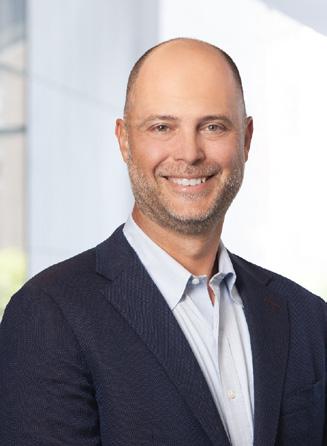
Mike Estep has been head of product for Prudential Group Insurance since 2022, and recently promoted to President of Prudential Group Insurance. Estep has led all aspects of product strategy, including the development of a strategic roadmap for Group’s current and future product portfolio with a focus on customer relevancy and sustainable, profitable growth.
Prior to joining Prudential, Estep led the voluntary benefits business at Symetra, with profit and loss accountability for product, enrollment, strategy and execution. Previously, Estep led the group product and voluntary practice at the Guardian Life Insurance Company. Estep holds a bachelor’s degree in business administration and management from the University of Wisconsin, and an MBA from DePaul University.
MARCH 2024 CALIFORNIA BROKER | 45 CalBrokerMag.com
2
31
33
3
4
46


46 | CALIFORNIA BROKER MARCH 2024 CalBrokerMag.com
Petersen International Underwriters piu.org piu@piu.org 800-345-8816
Covered California coveredca.com/forsmallbusiness 844-332-8384
BenefitMall www.benefitmall.com
Collaboration Center info@healthbrokercollaborators.com 714-497-3312
Commission Solutions commission.solutions phil@commission.solutions 800-500-9799
Compliance Poster Company complianceposter.com globalcomplianceposters.com
Pinnacle Claims Management pinnacletpa.com www.globalcomplianceposters.com | www.complianceposter.com 1-800-817-7678 We provide research and supporting products to facilitate employer compliance with labor laws ” “ In house legal team Intensive labor law research and analysis Digital compliance dashboard portal Customized solutions Free labor law compliance update notifications Satisfaction guarantee Use Coupon Code: CBMMARCH for 20% discount
48

Going beyond expectations at every turn
At Humana, what we do is more than health insurance. It’s human care—care that works harder, goes further and digs deeper. All so our members can feel their best, inside and out.
MARCH 2024
Proud partner of California Broker Magazine
If your clients are self-funding health benefits, chances are they're getting fed up with off-the-shelf plans and the lack of transparency.
We’re Pinnacle Claims Management, Inc., a TPA here to simplify health benefits administration for self-funded employers.

Now the first thing you should know about us is that we’re
independently, privately owned.
with
provider network and we don't put
ahead
the
outfits offer, and
it to
HERE’S THE BOTTOM LINE ON WHAT WE OFFER: With customizable health plan solutions that improve ROI, we’ve been helping employers keep people covered for almost 30 years now. See what we can do for your clients. pinnacletpa.com Competitive Network Solutions Navigation Technology & Concierge Services Disease Management & Wellness programs Transparency with Scalable Analytics to Fit Client Needs Customized Cost-Saving Plan Designs
Which means we don't have conflicting priorities
a
EBITDA
of service. So we can provide everything
big
tailor
meet your client's needs. Forget one-size-fits-all.






























































































 Dorothy
Dorothy

































































